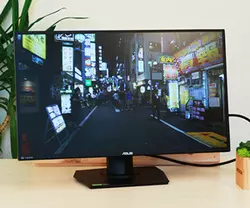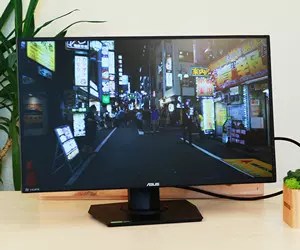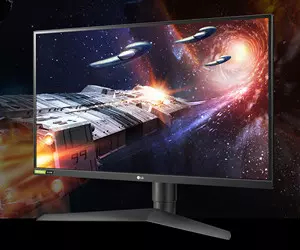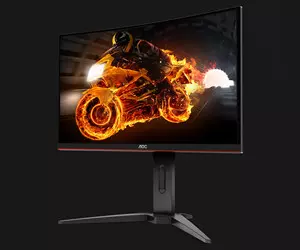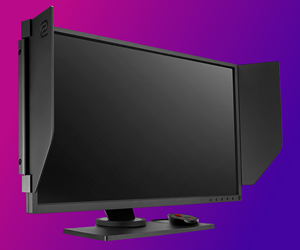ASUS TUF Gaming VG279QM Review: The Wild West's Fastest IPS Gaming Monitor
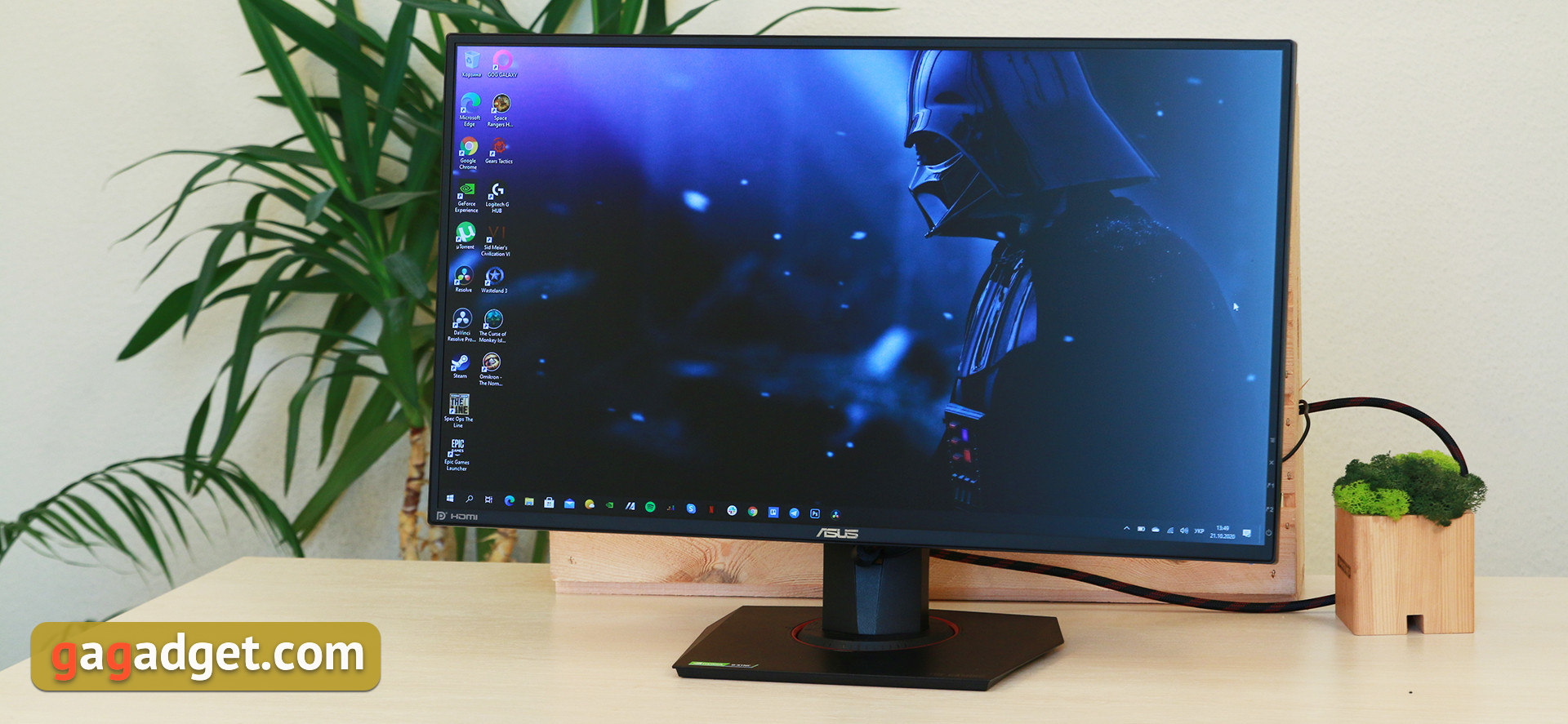
ASUS TUF Gaming VG279QM Against Its Competitors in 2021
But how is it compared to other gaming monitors available on the market? Let’s see what makes it so different.
5 Competing Gaming Monitors
Author's Choice 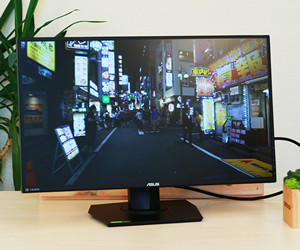 |
ASUS TUF Gaming VG279QM
|
Check Price |
People's Choice 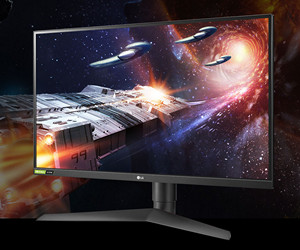 |
LG UltraGear 27GN75B-B
|
Check Price |
Premium Choice 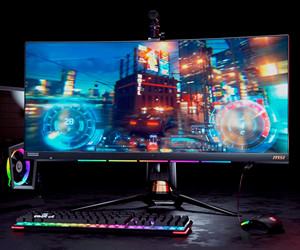 |
MSI Optix MPG341CQR
|
Check Price |
Best Budget 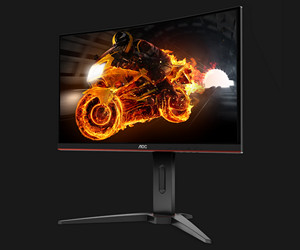 |
AOC C27G1
|
Check Price |
e-sports Choice 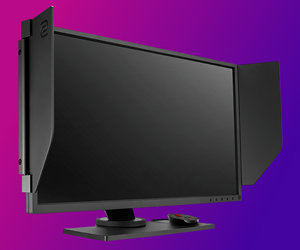 |
BenQ Zowie XL2546
|
Check Price |
ASUS TUF Gaming VG279QM Detailed Overview
So what makes ASUS TUF Gaming VG279QM different in the abundance of features that come directly on the monitors.
- Fast IPS display with good calibration
- Adaptive-Sync and G-Sync compatible
- Fully adjustable ergonomic stand
Until recently, only gaming monitors with TN panels could boast a 280 Hz refresh rate and 1 ms pixel response time, the disadvantages of which we all know very well. The hero of today's review, ASUS TUF Gaming VG279QM is one of the first and among very few gaming monitors to feature an IPS panel with good color rendering, decent color coverage, high brightness, HDR support, and so high speed performance. It has support for Adaptive-Sync and NVIDIA G-Sync and is equipped with a bunch of branded technologies to improve the picture. The VG279QM has a pleasant and quite modest by gaming standards design, as well as a convenient layout with a wide range of options for adjustment. Yes, according to current standards 27 inch and FullHD looks a bit small, but with increased resolution it would be much harder to get such high frame rates in the modern games in terms of hardware requirements.
What’s Included
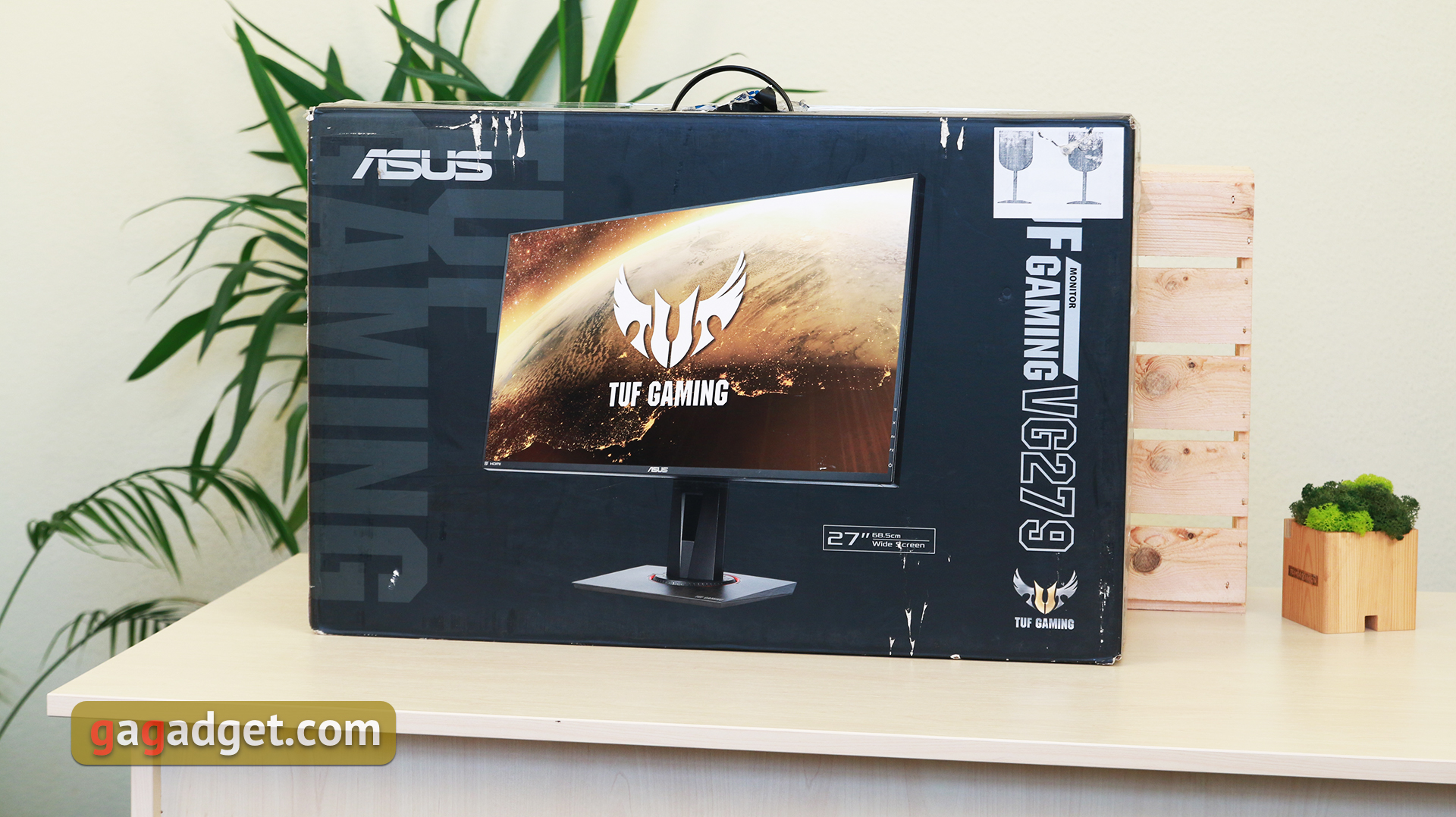
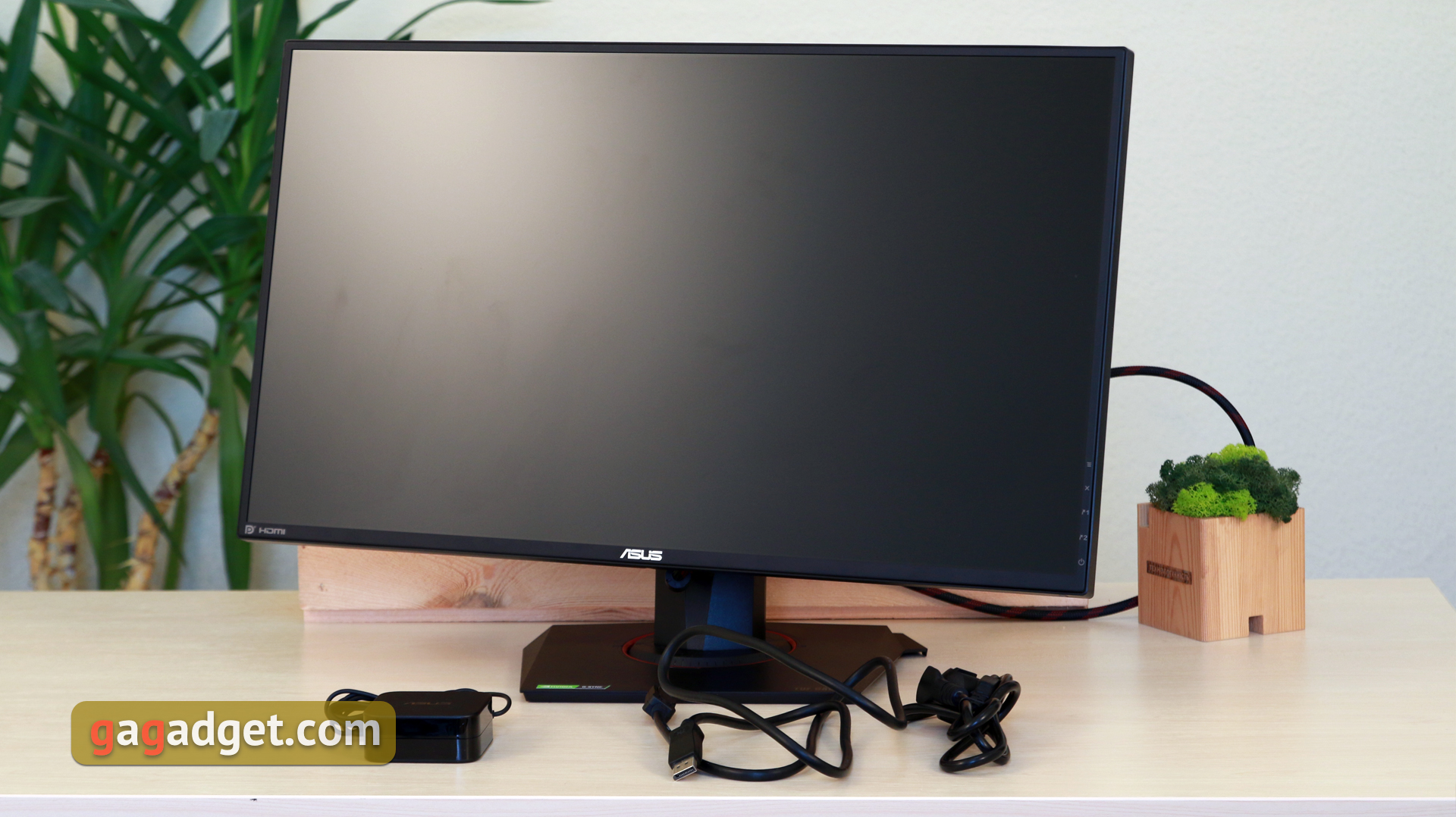
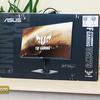
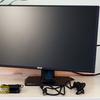
ASUS TUF Gaming VG279QM is delivered in a large black and gray box with monitor images and basic specifications. Together with the monitor, you will find HDMI and DisplayPort cables, a compact external power supply, power cable and documentation kit in the box. HDMI and paperwork have not arrived for the review.
What does ASUS TUF Gaming VG279QM Look Like?

The TUF Gaming range stands out with a rather modest design featuring gamer's " tunes", but there are no extras like RGB backlighting and other bells and whistles. ASUS TUF Gaming VG279QM follows this tradition. It is almost entirely made of matte rough plastic. The perimeter frame is quite thin, but the so-called "frameless" design is not used. In other words, there are physically present borders. The clearances on the sides and on the top are about a centimeter. At the bottom – a little more, under the screen a small silver ASUS logo was placed.
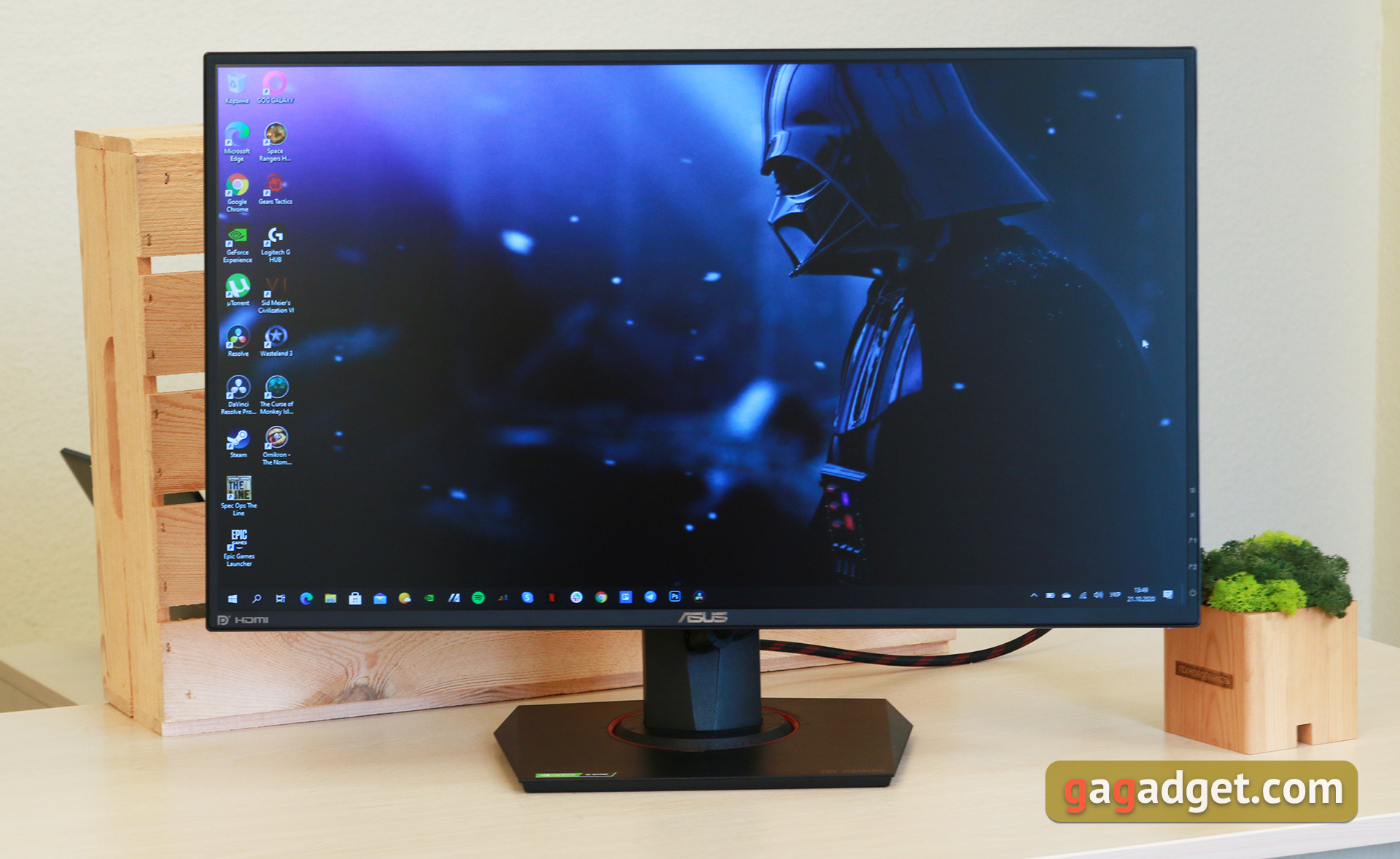
The stand is impressive in size, trapezoidal shape, similar to other TUF Gaming monitors. For greater stability, there is a metal inside and black plastic outside. At the front of the stand – the product line logo and the NVIDIA G-Sync logo. The mounting of the foot to the base is adjustable: the monitor can swivel to the sides by 90° in each direction. Red edging and notched patterns at the base are the only ornamental elements.

The back of the monitor is also covered with decorative patterns in the style of ASUS gaming devices. On the top there is a large brand logo of the manufacturer, and on the top of the stand there is a TUF Gaming logo. That's all about the "decorations". The rest is usual: the stand is attached to the central part of the monitor. You can remove it and hang the monitor on the wall, the VESA 100x100 standard is supported. At the bottom of the stand there is a small through hole for cable management.


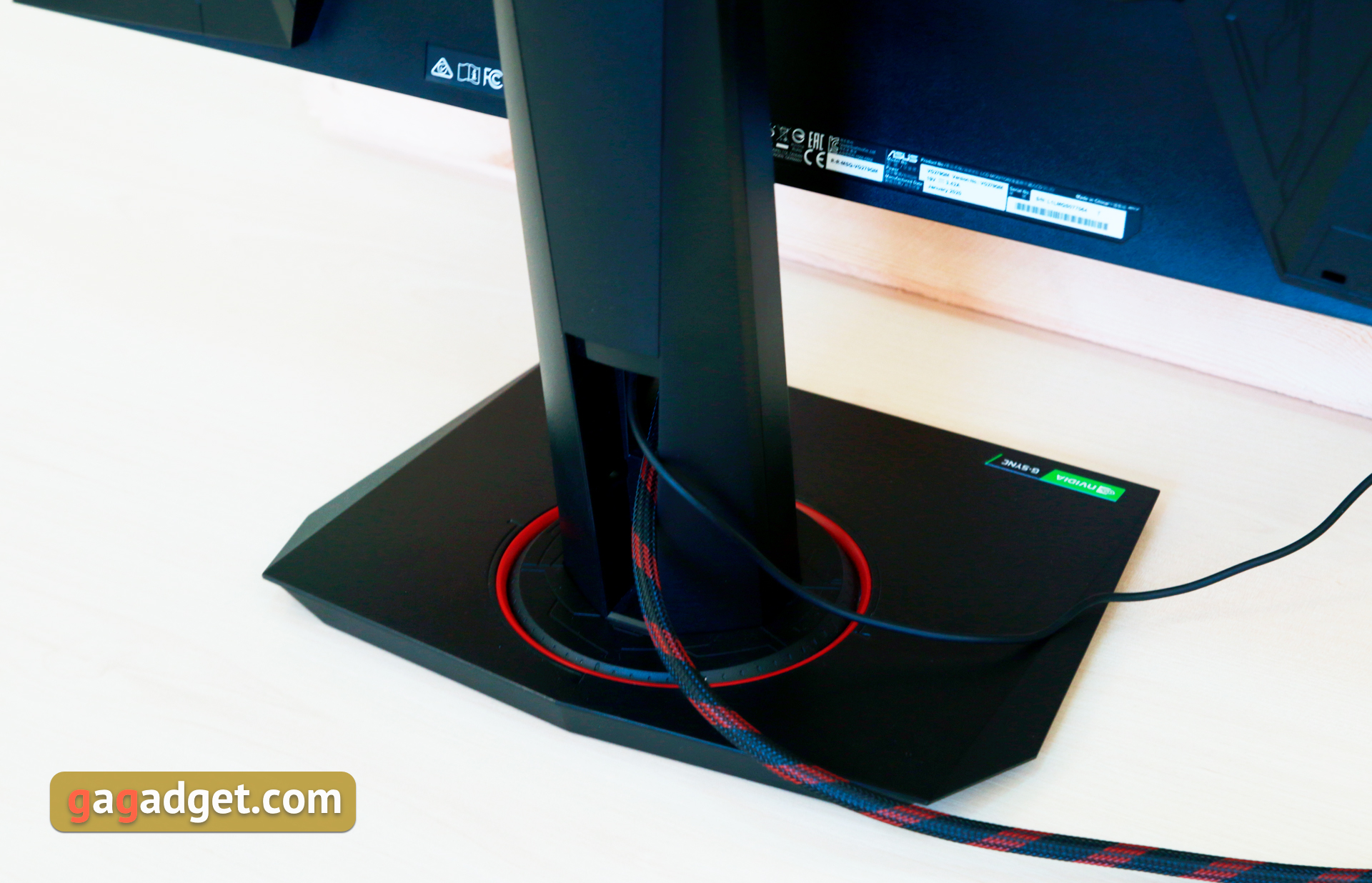
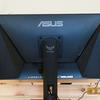

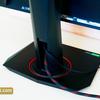
The monitor is very slim and does not take up much space on the table:

Among the functional elements on the rear panel there is a Kensington Lock socket and a control panel. It is similar to other ASUS game models. It features a five-position joystick and four physical trapezoidal buttons below it. They are large and easy to find.
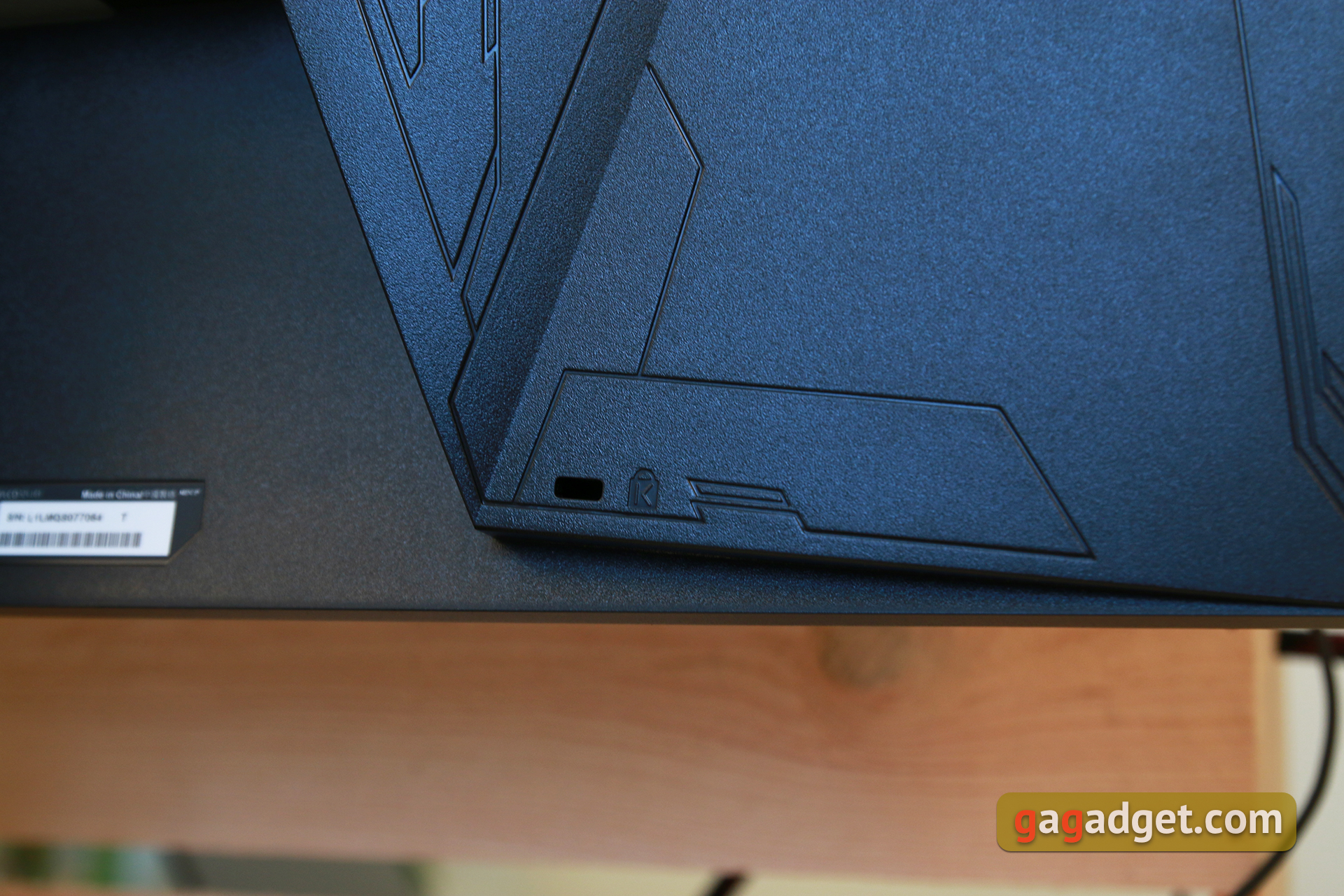
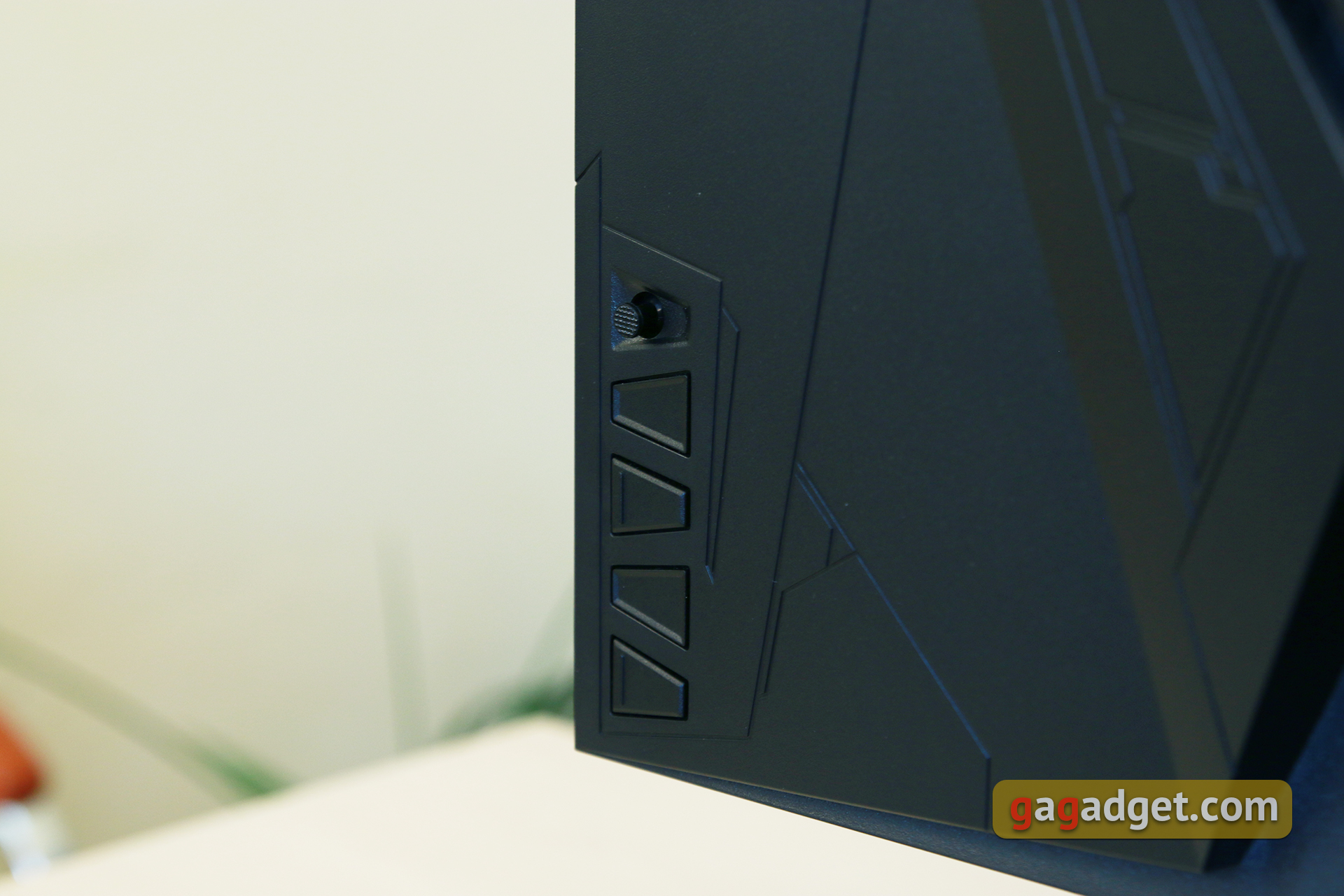


The panel with ports is located under the place of stand fastening and faces downwards.

There is a small white LED at the bottom right.
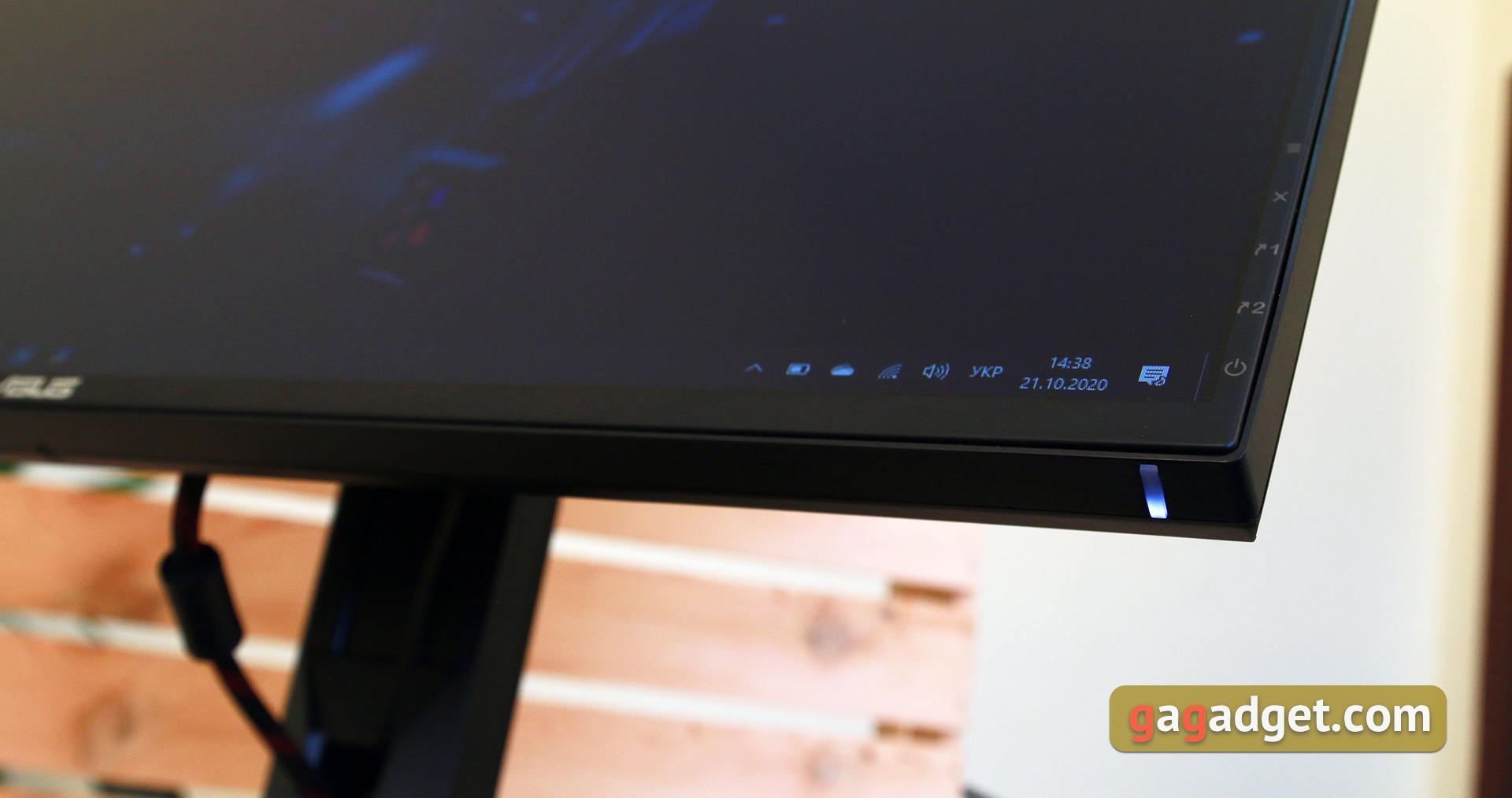
The appearance of the monitor is quite versatile: belonging to the gamer's range is evident, but ASUS TUF Gaming VG279QM looks quite harmonious in the office environment as well. The assembly and materials are at a good level: no unclear spaces between the details or "crunch" of the monitor housing.
What about Usability, Adjustment and Plug-ins?
Buttons and joystick control is organized similarly to the previous models. The joystick is responsible for menu navigation and confirmation. Buttons below – exit (also brings to the screen the designation of button functions), GamePlus functions (sight display, zoom, FPS, timer), switching of GameVisual game modes and power. Getting accustomed to such control is quite fast. It is a little bit more difficult to remember what is in the on-screen menu.
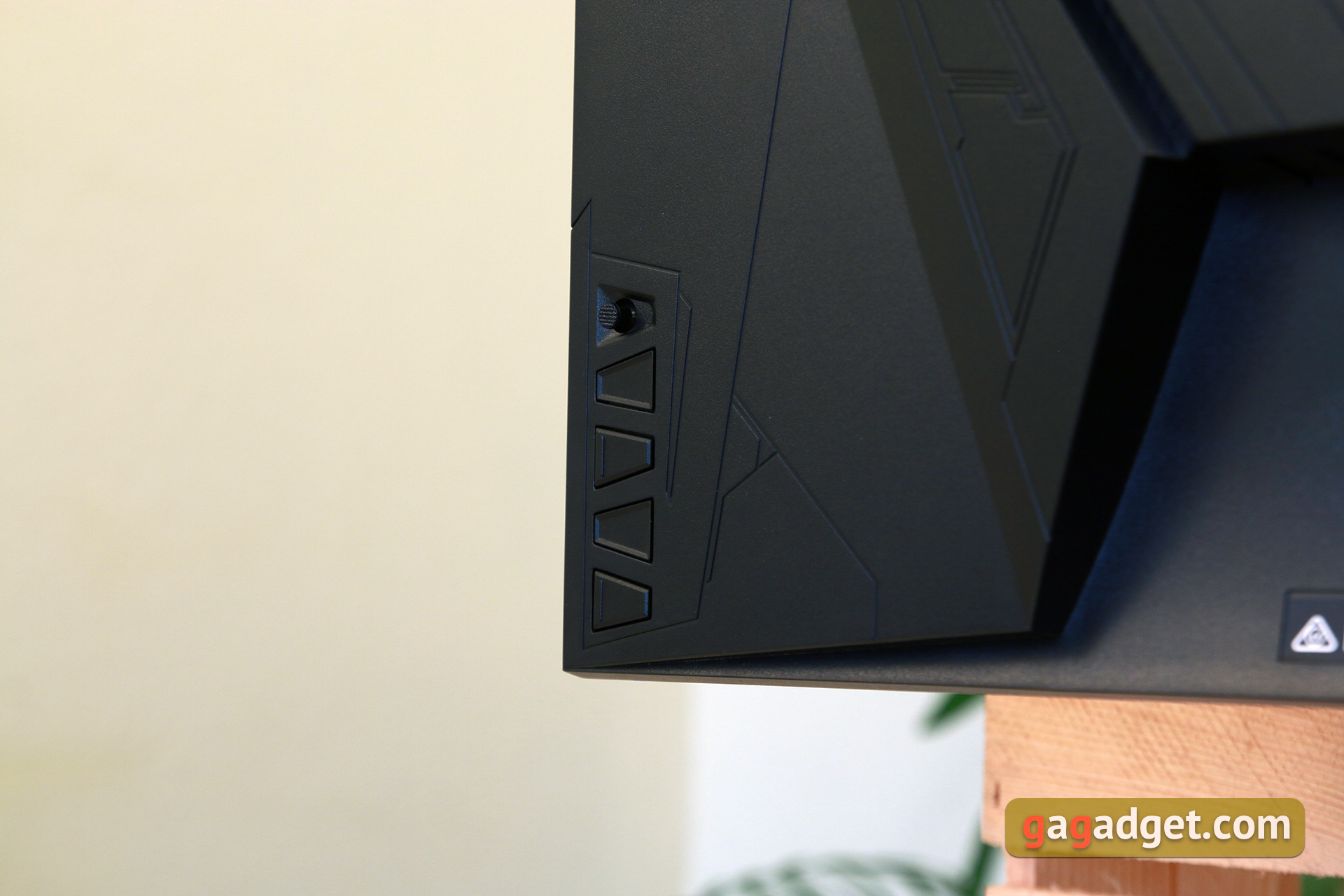
The panel has sockets: a power supply jack, two HDMI 2.0 ports, one DisplayPort 1.2, a standard 3.5mm audio jack for headphones and (apparently) a USB service jack. There are not many ports, but all essentials are present.
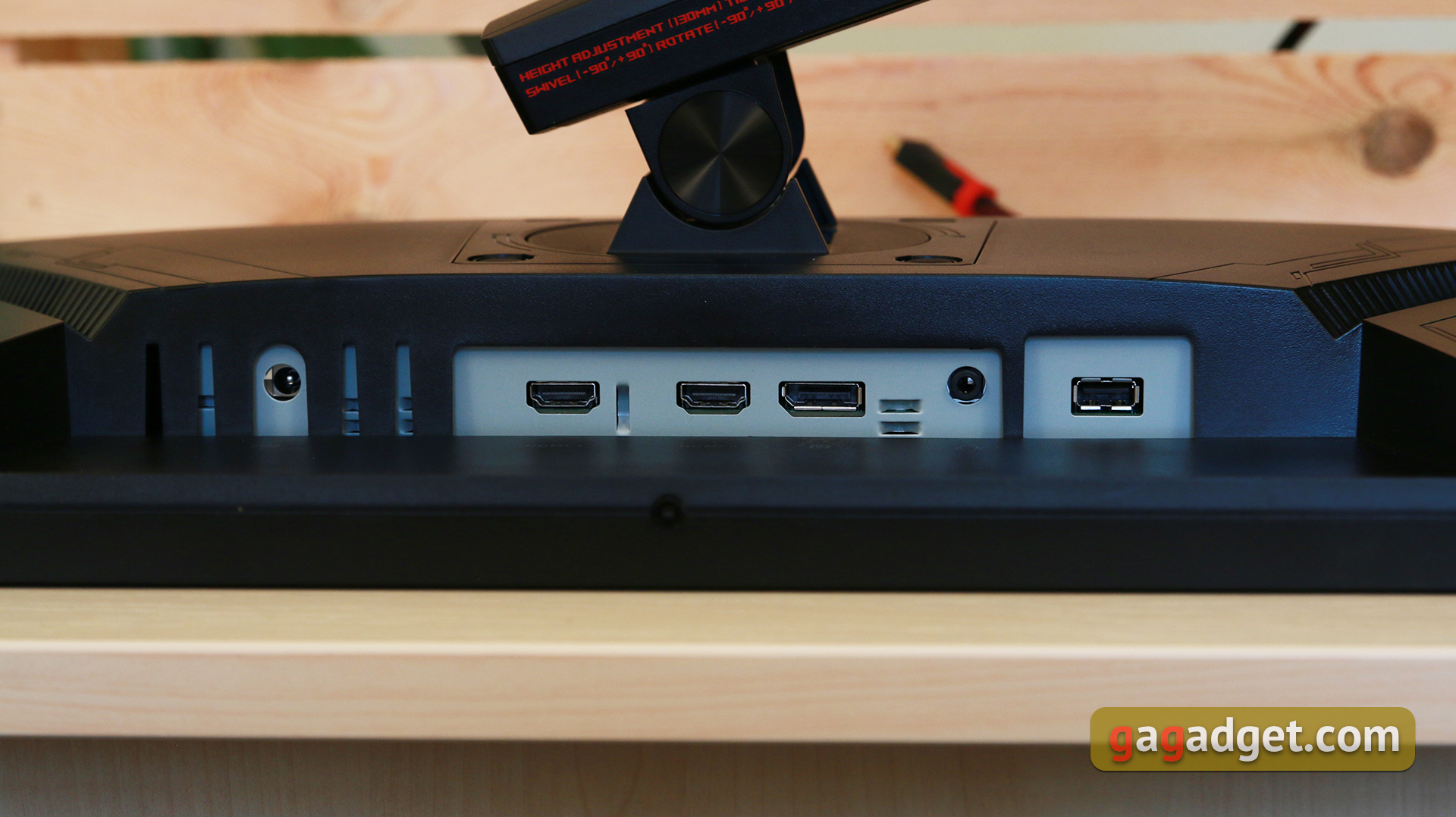
All connected cables can be routed neatly thanks to the hole in the stand.
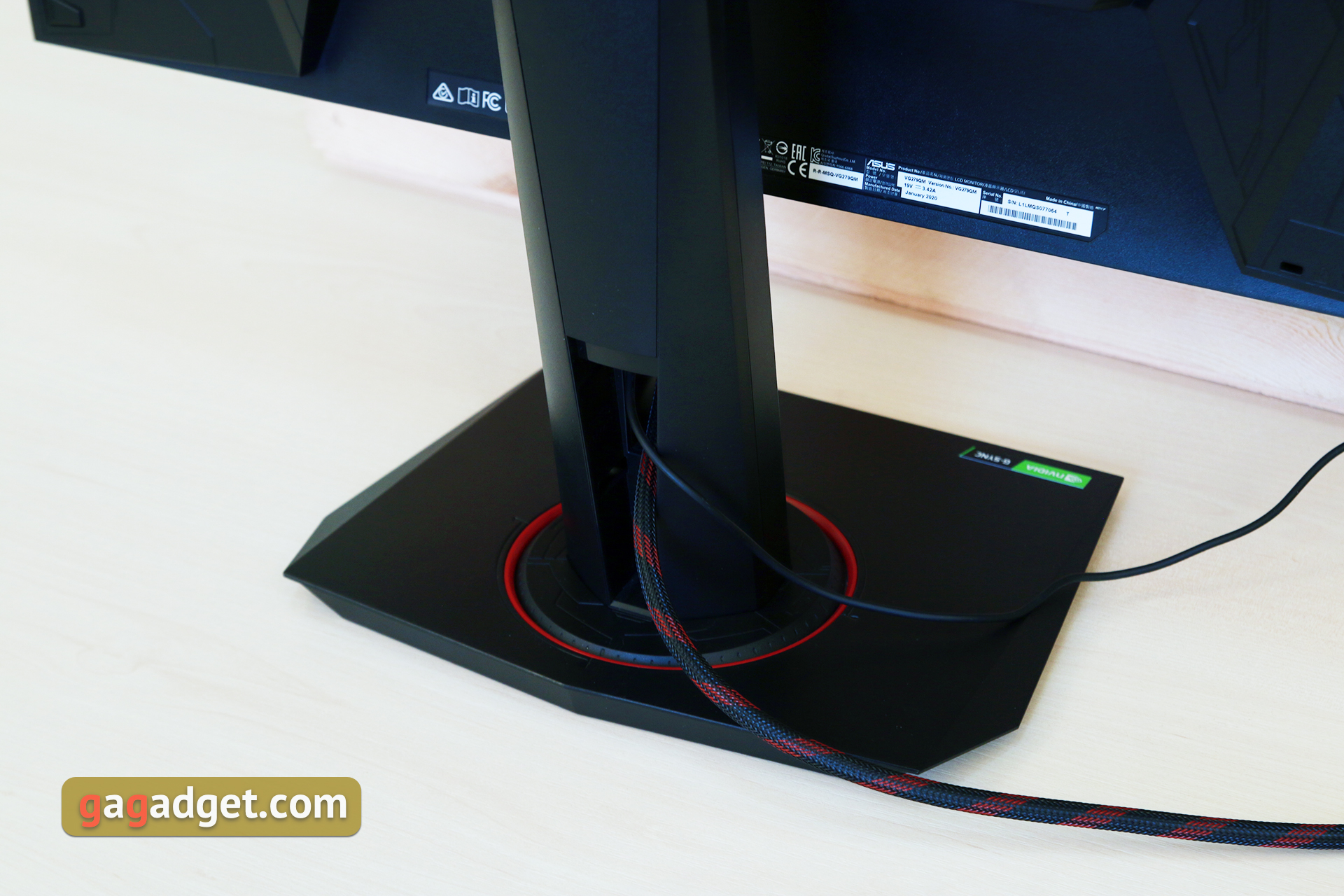
The stand allows you to adjust the height within a range of 130 mm. In the lower position, the monitor practically touches the stand:
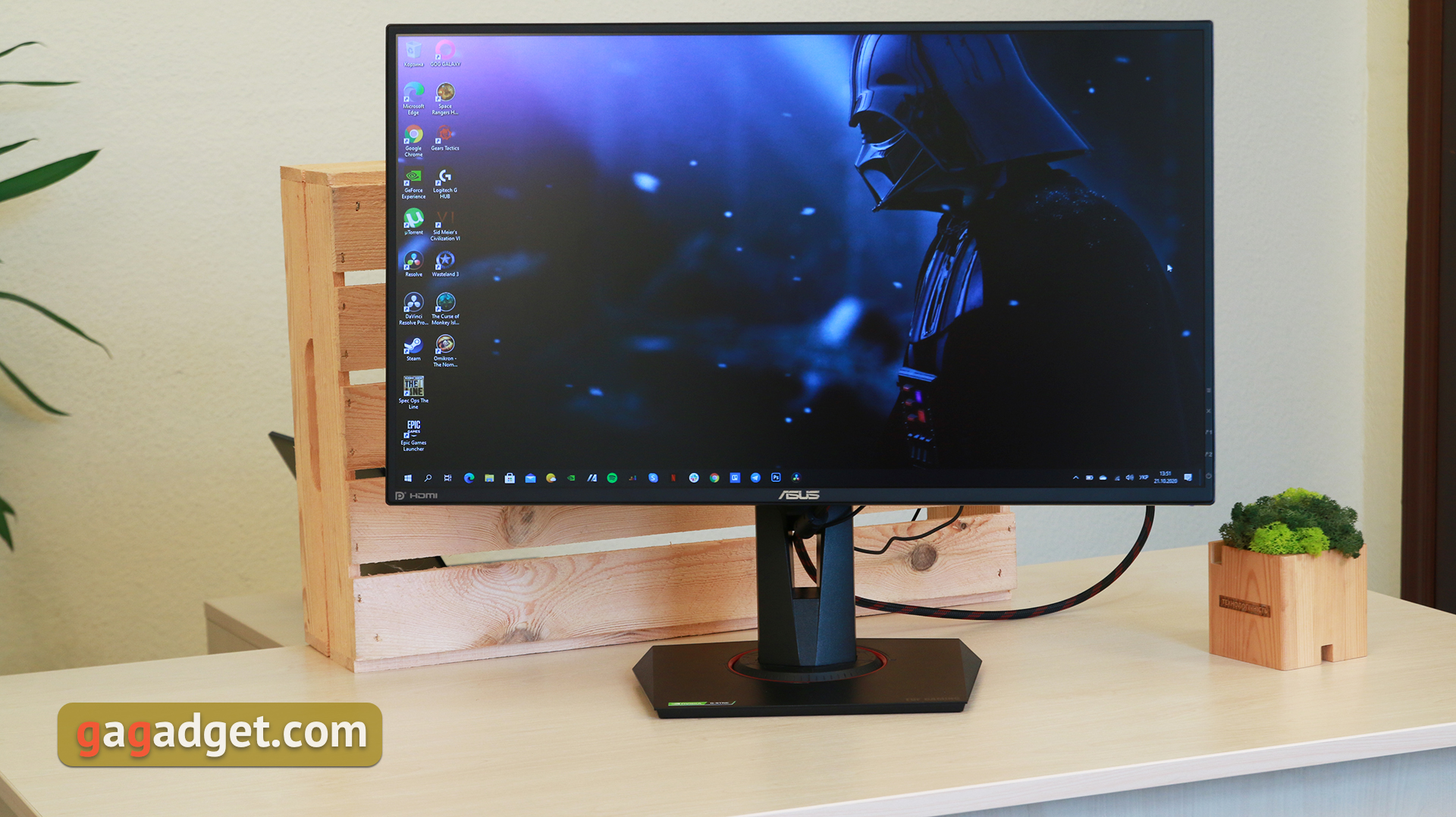
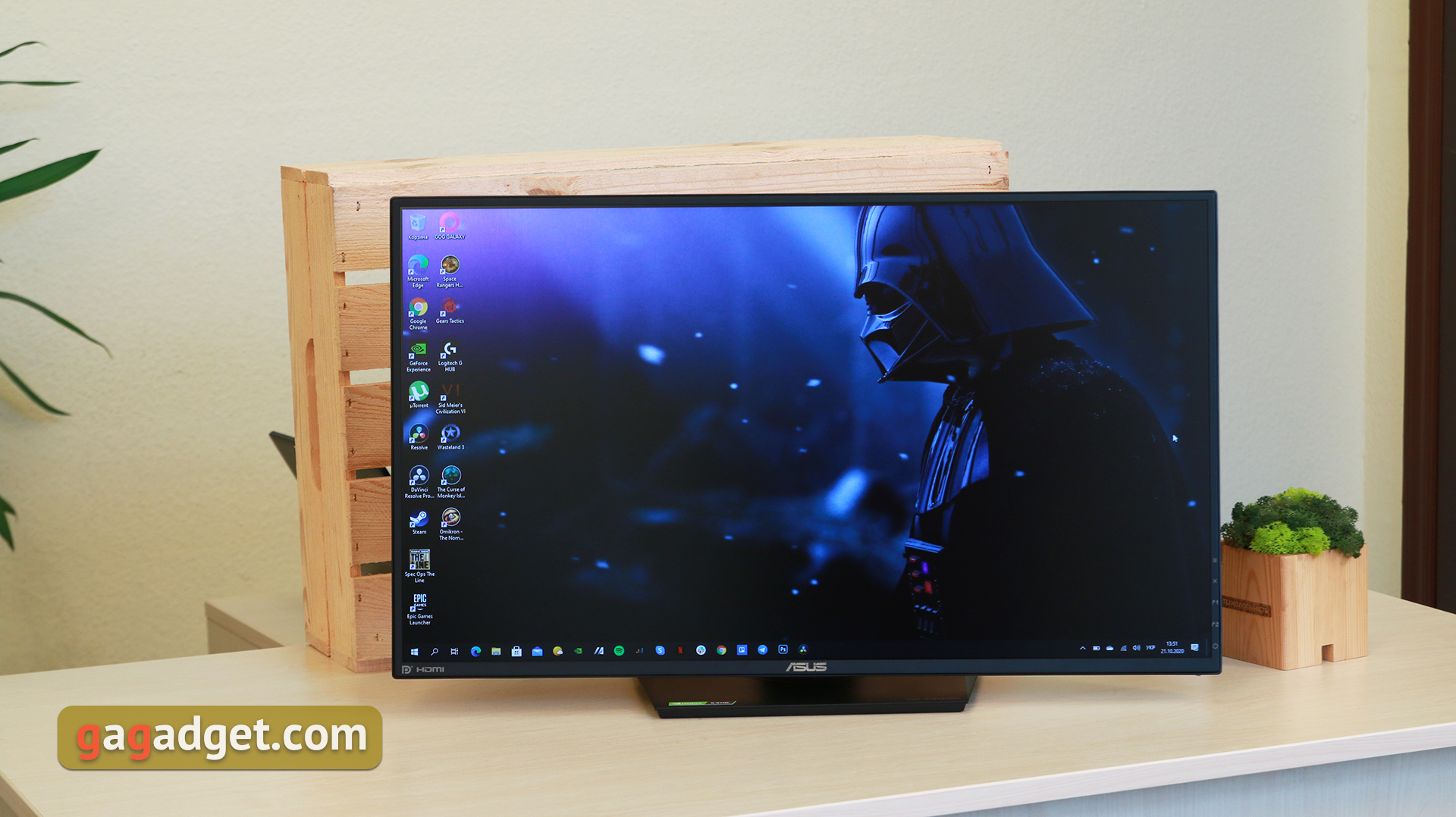

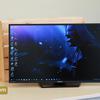
The stand allows you to swivel the monitor by 90°. The tilt can be adjusted from +33° to -5°:
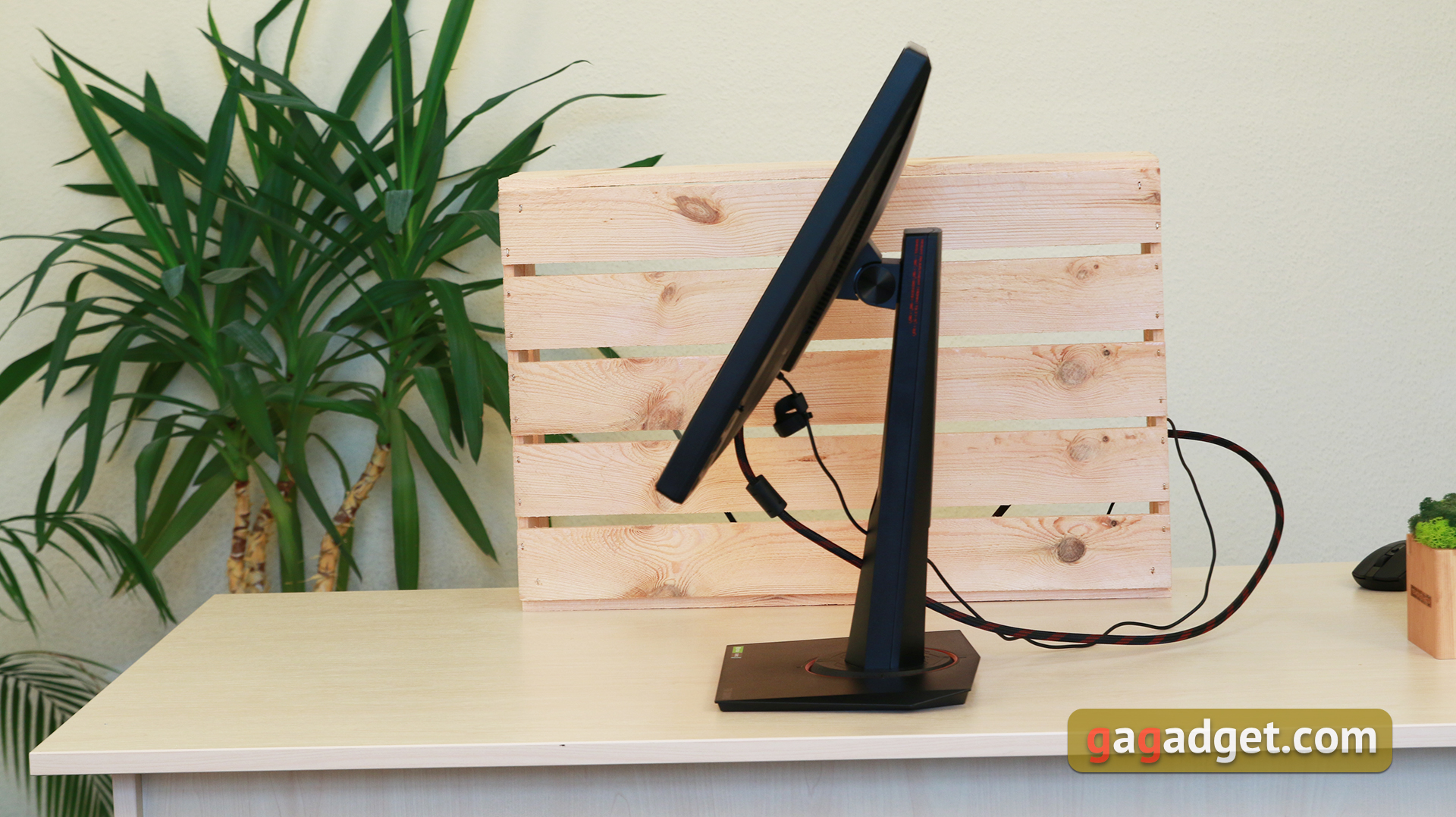



It is also possible to turn the monitor into portrait mode.
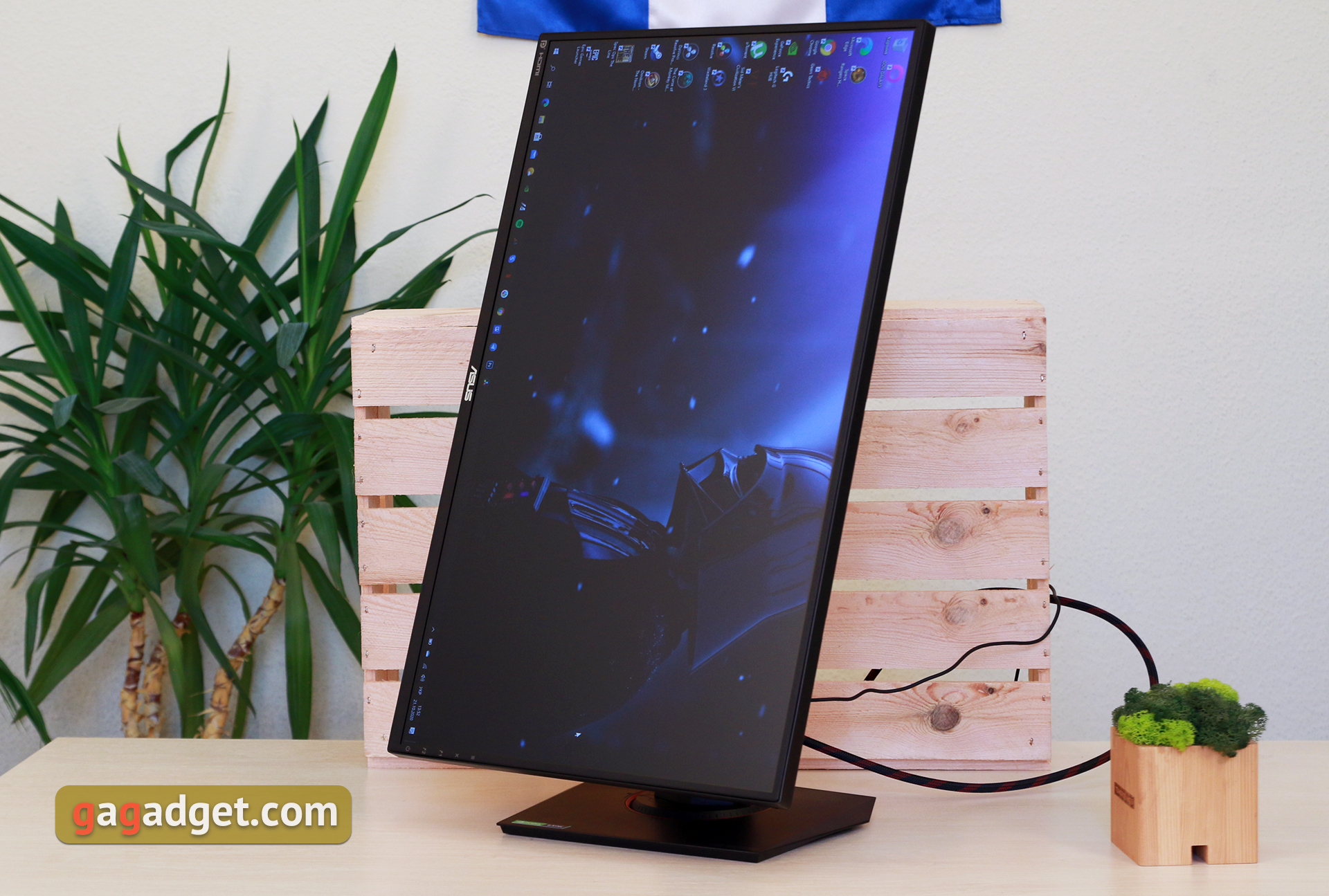
Now let's go to the menu. It is organized quite logically, but the monitor has a very impressive range of functions and additional features. So, it will take some time to adjust everything to your preferences. At the same time, you should remember that if you activate some default presets, some functions will be inactive. For example, in sRGB mode the brightness is fixed and cannot be changed. The first menu item "Game" is responsible for acceleration of the panel to 280 Hz, overdrive, enabling adaptive synchronization, ELMB SYNC (simultaneous operation of ELMB, low-motion-blur technology and Adaptive-sync), GamePlus functions, GameVisual presets and ShadowBoost function (highlighting the dark parts of the picture). The second item called "Image" is responsible for the standard settings of brightness, contrast, etc. The "Color" section allows you to adjust the color temperature. The purpose of the "Input Selection", I think, is clear from the title. The "MyFavorite" section allows you to assign two individual configuration presets to the keyboard shortcuts. In "System Settings" you can select the language, the menu itself, the sound, reset the settings and so on.
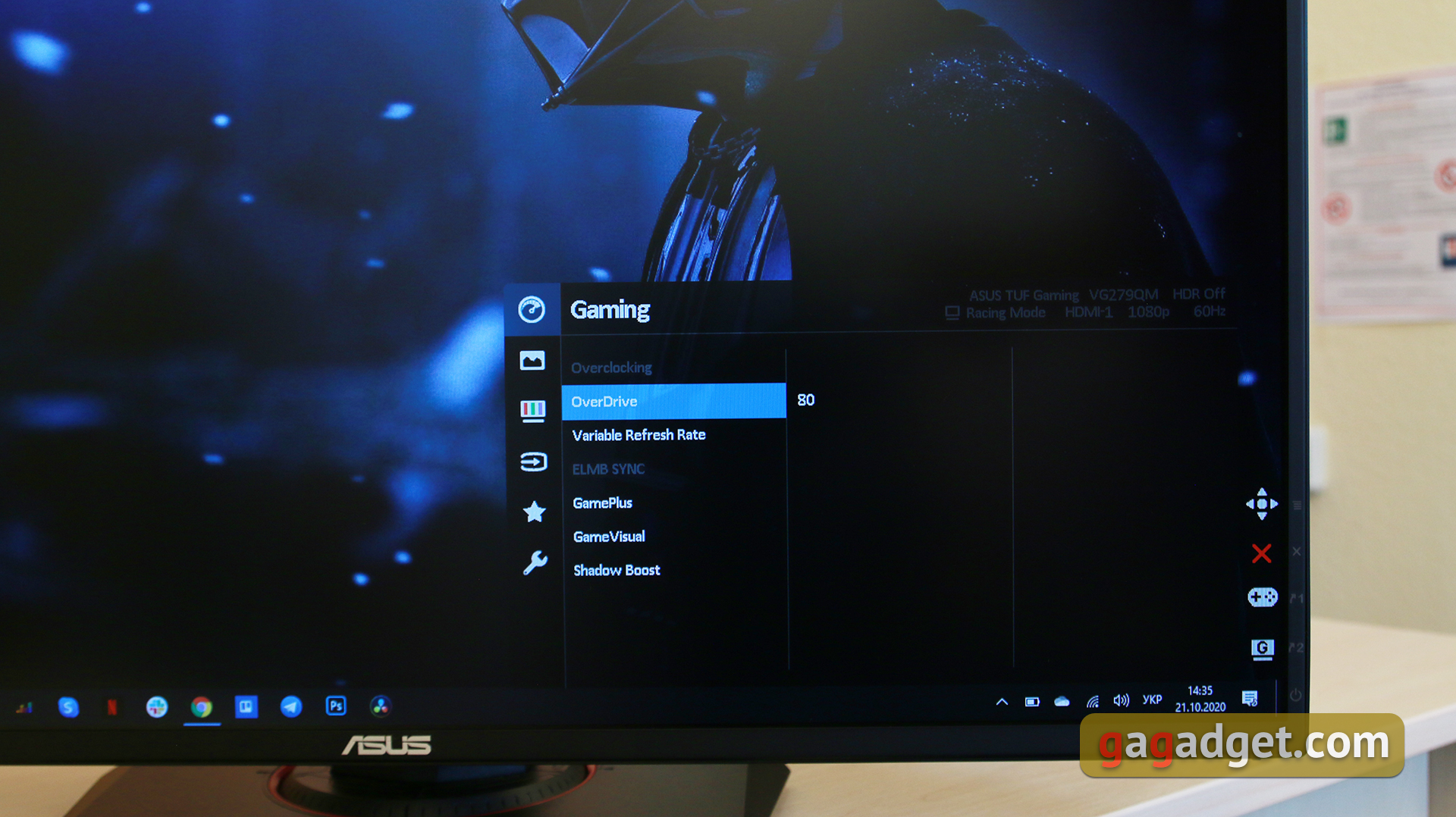
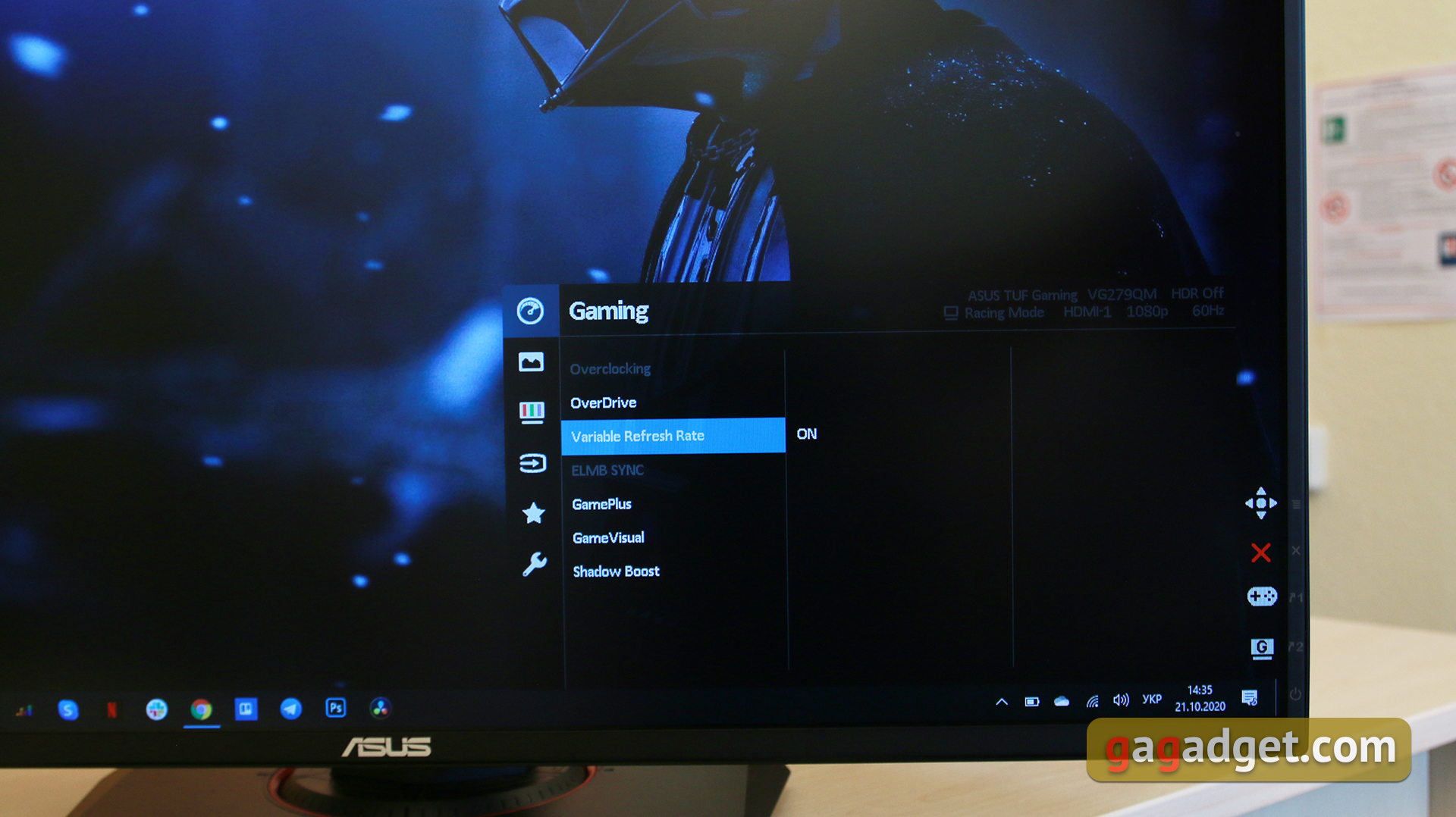
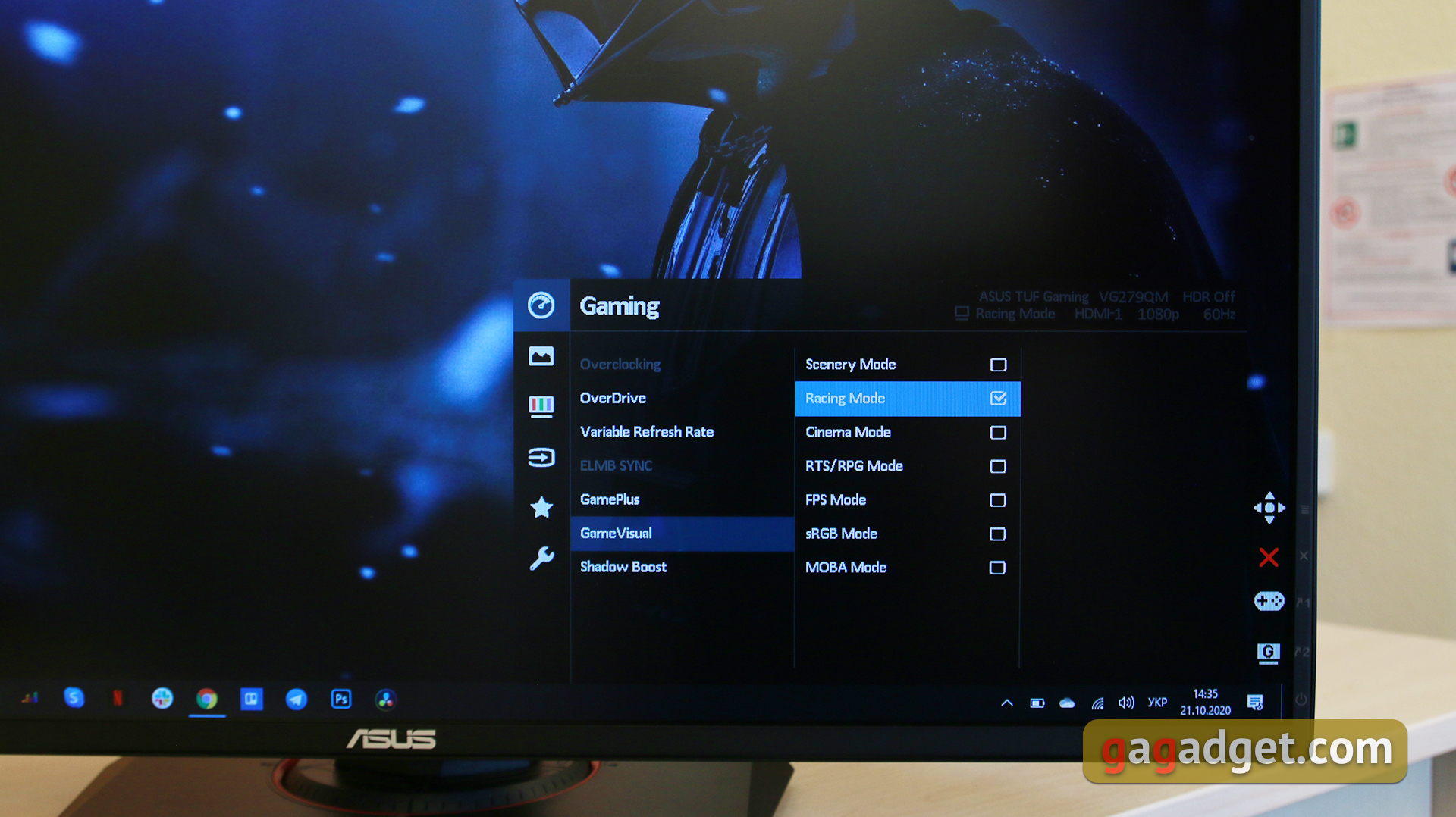

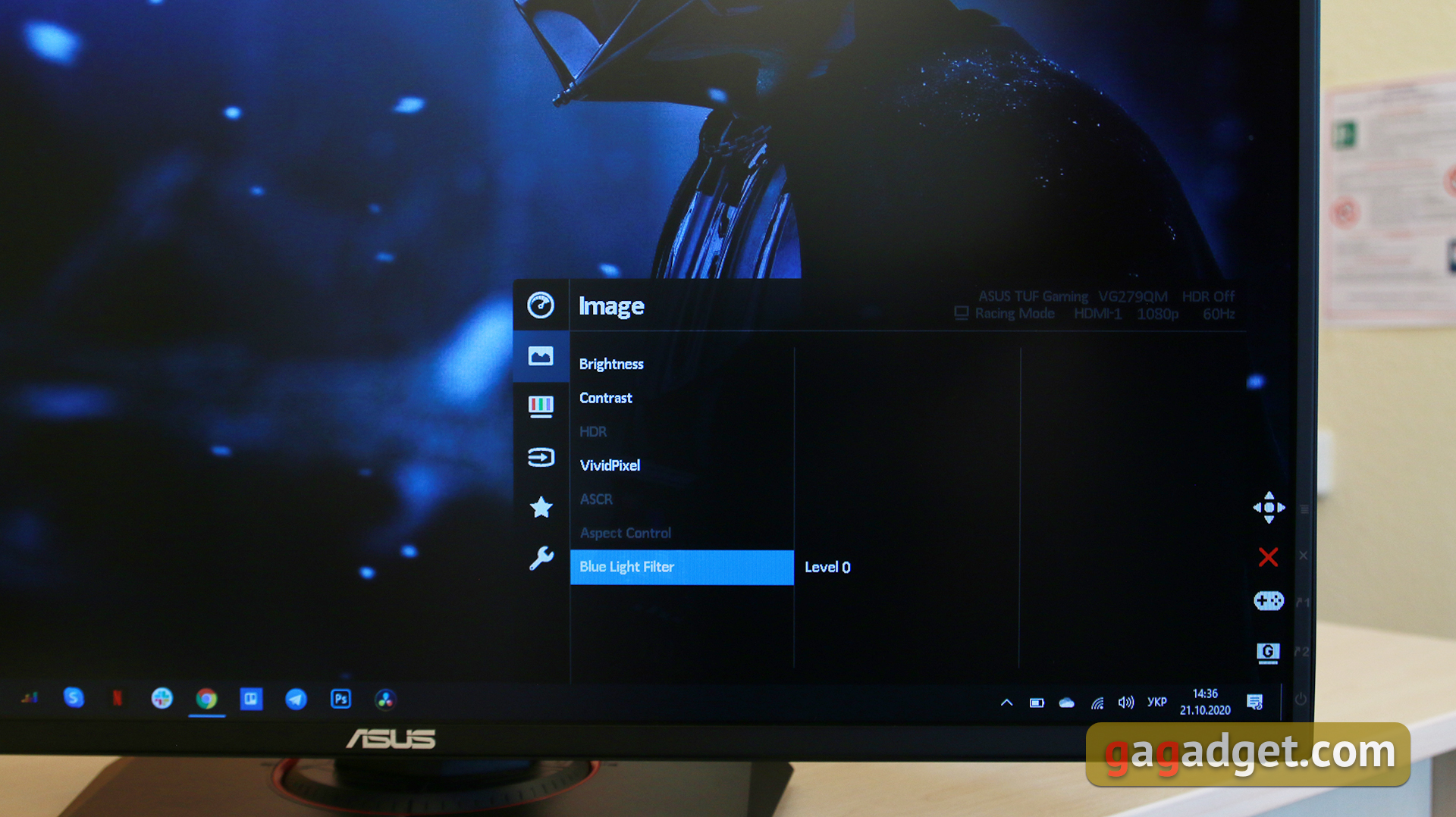
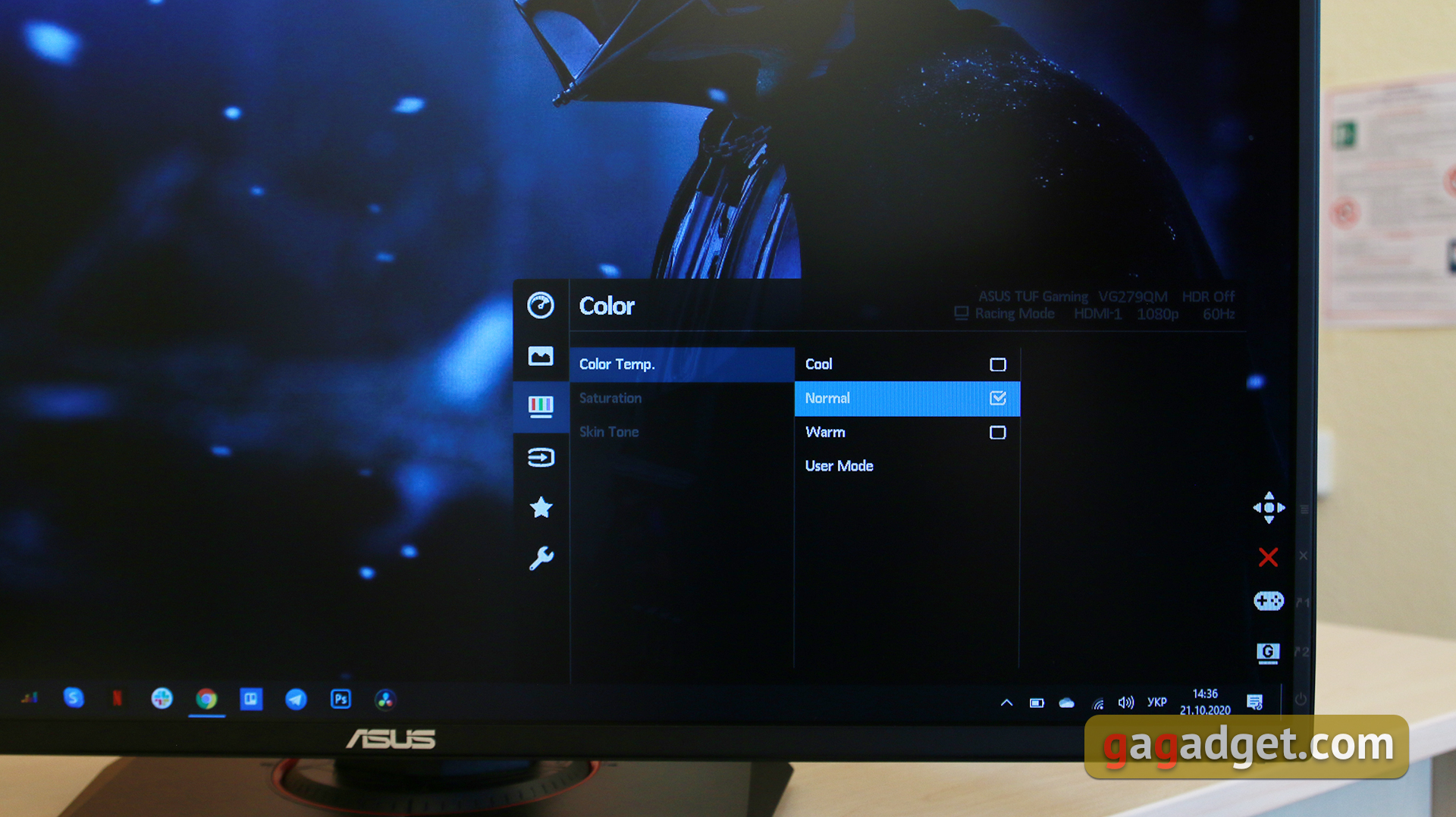

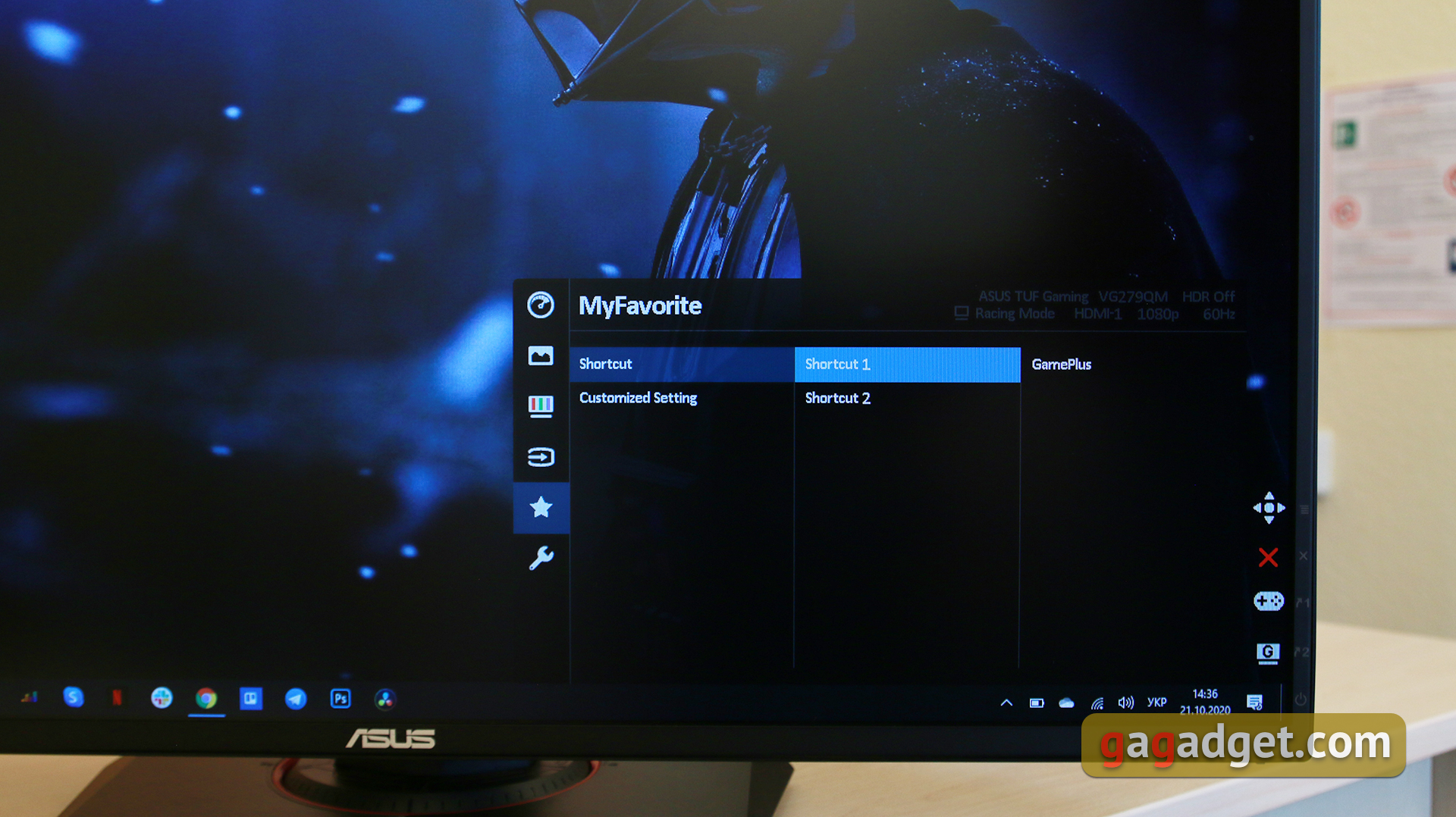
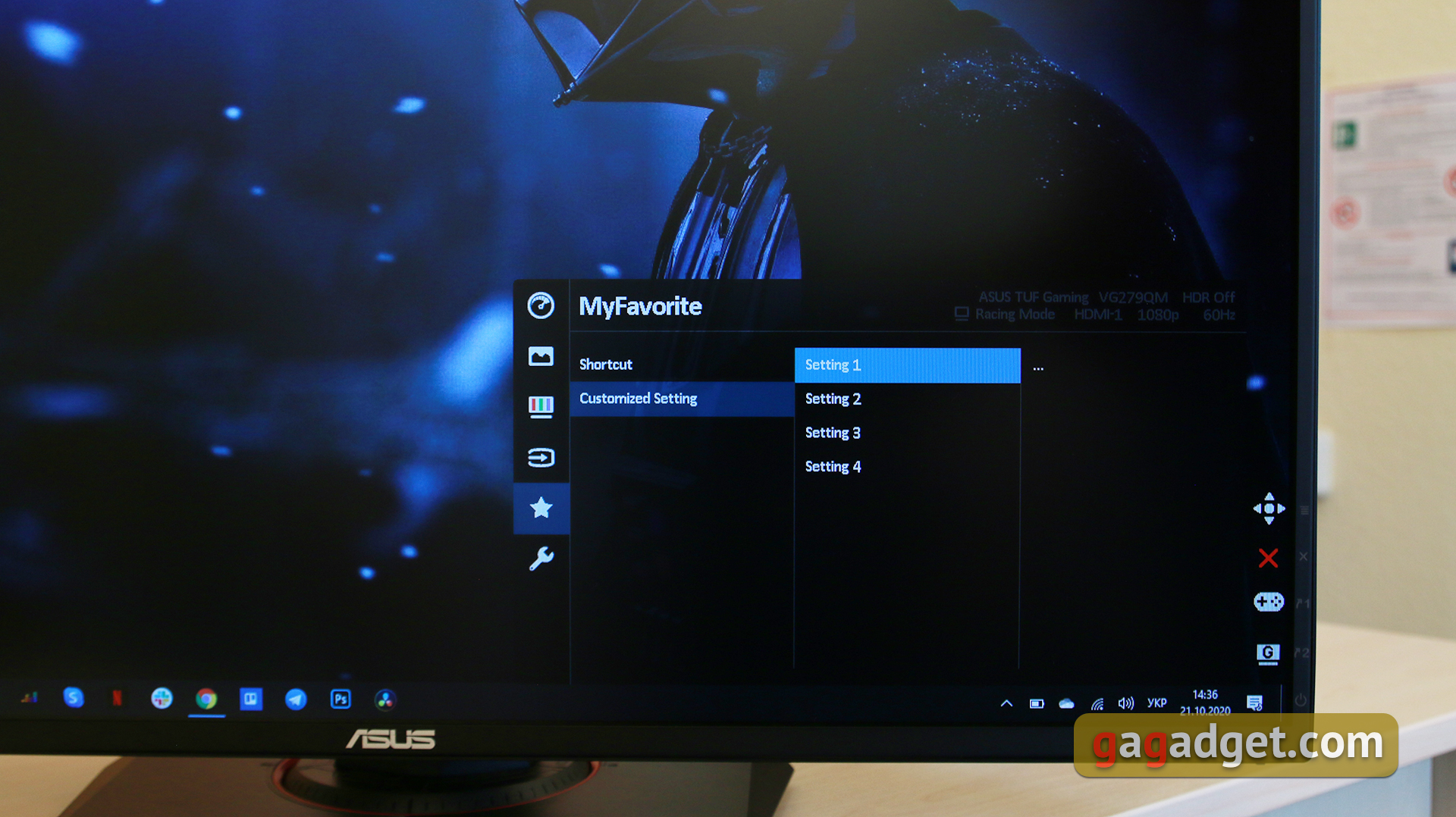


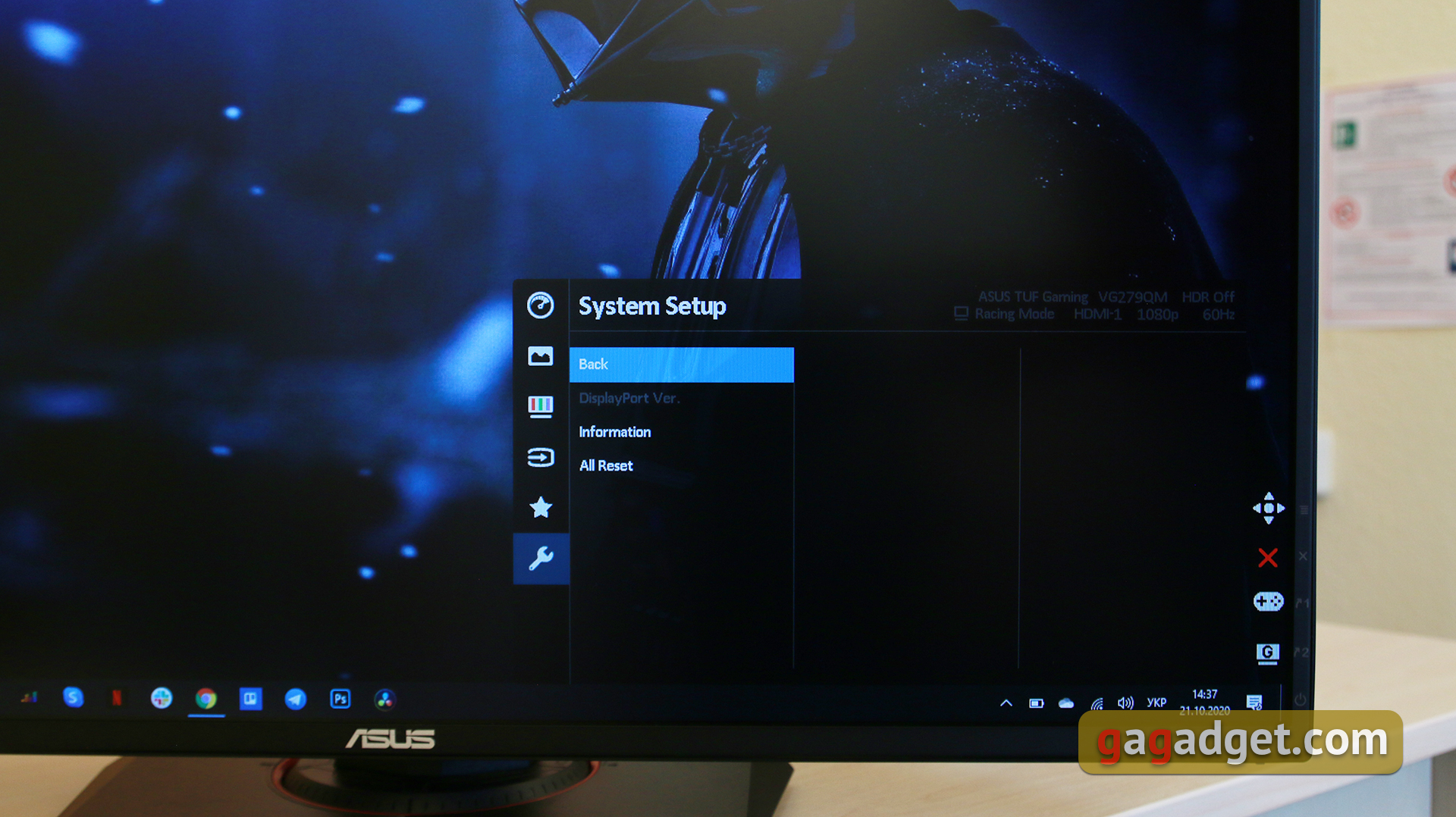












A few words about GamePlus. In this model there are already familiar functions of the on-screen crosshair, FPS counter, timer and display alignment feature. The Sniper mode with a zoom option has been added to them. The small rectangular area in the sight area is enlarged. The crosshair and Sniper mode can be considered as cheating, so ASUS calls them Practice Mode.
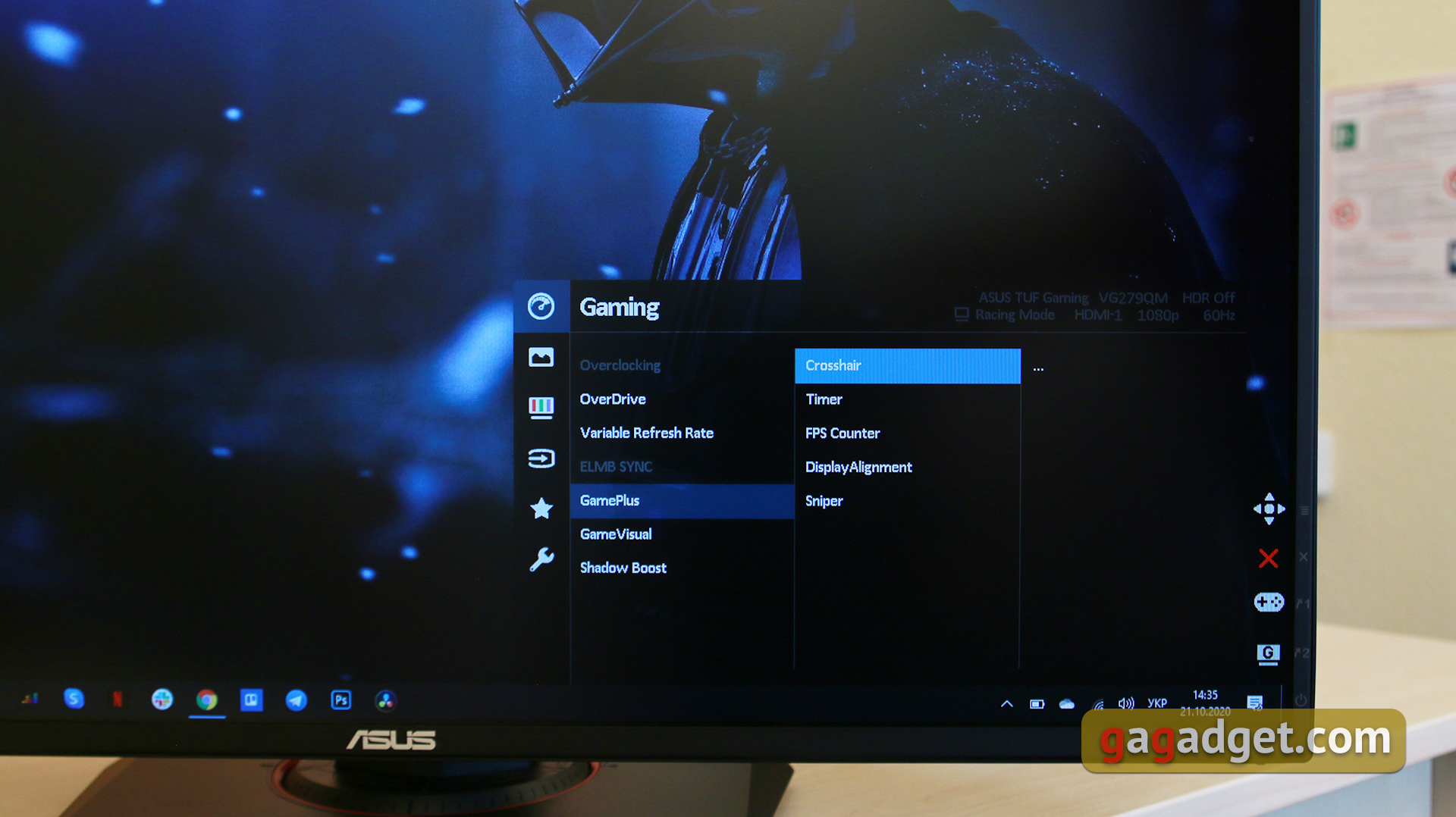
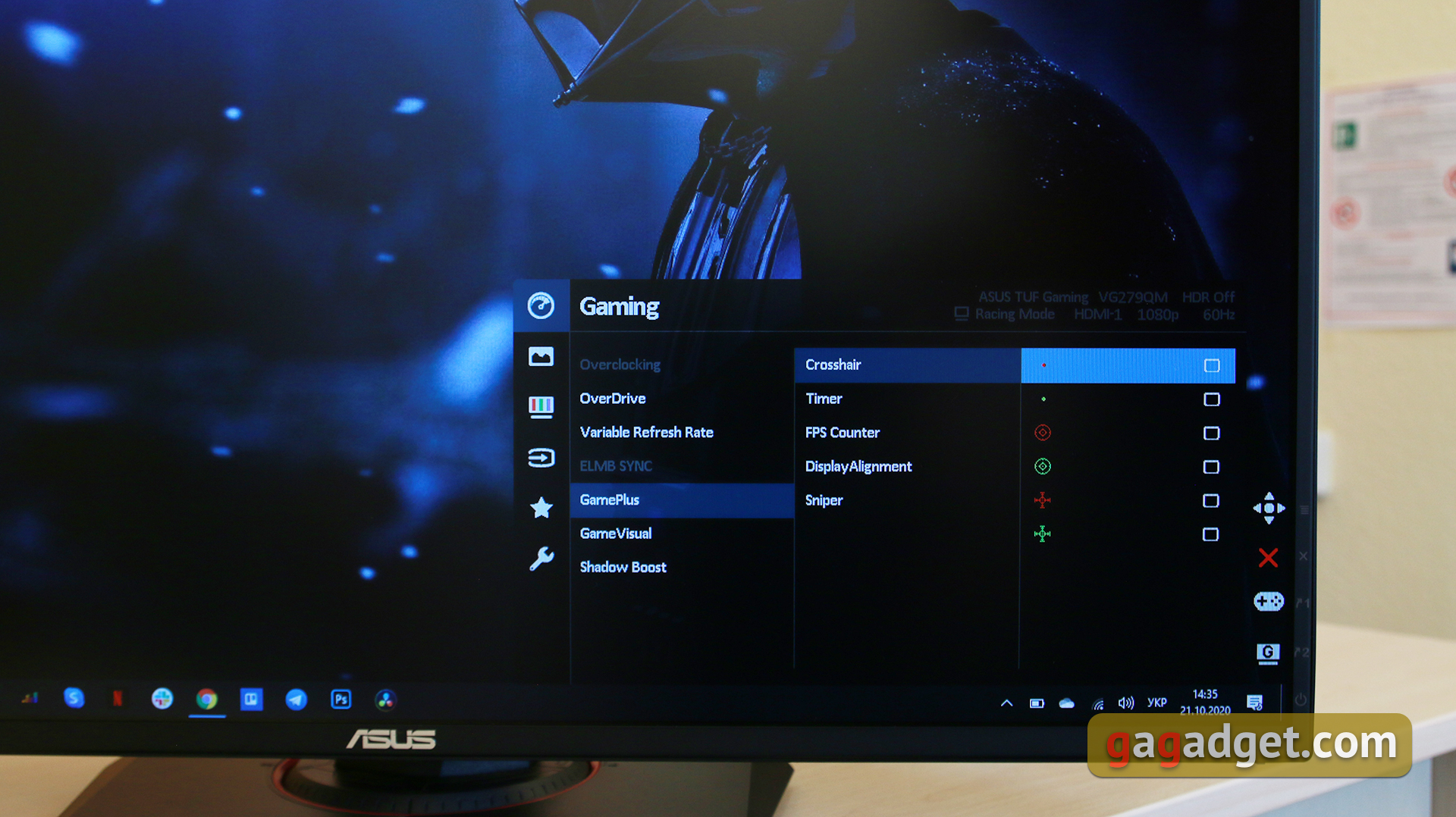

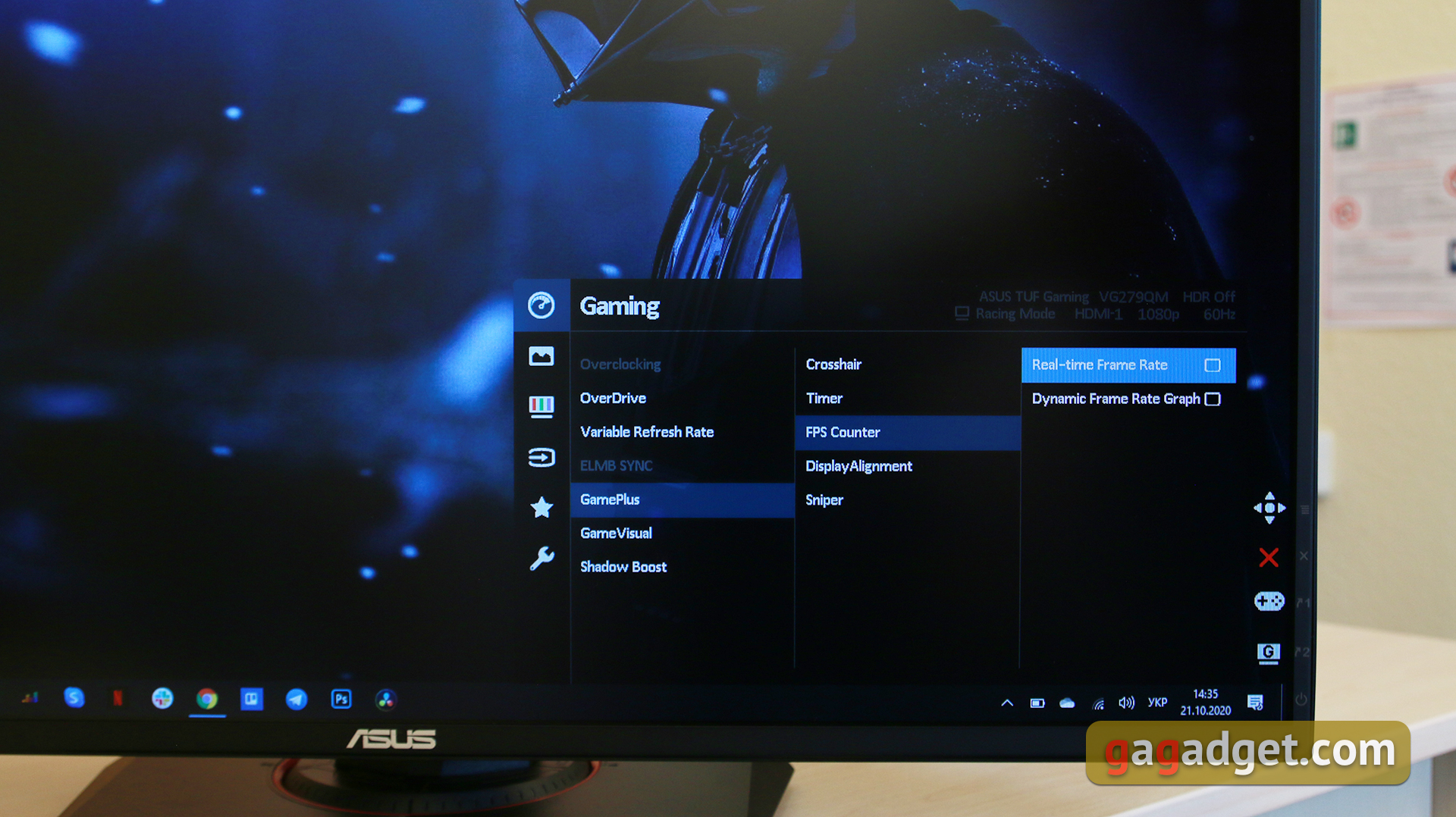
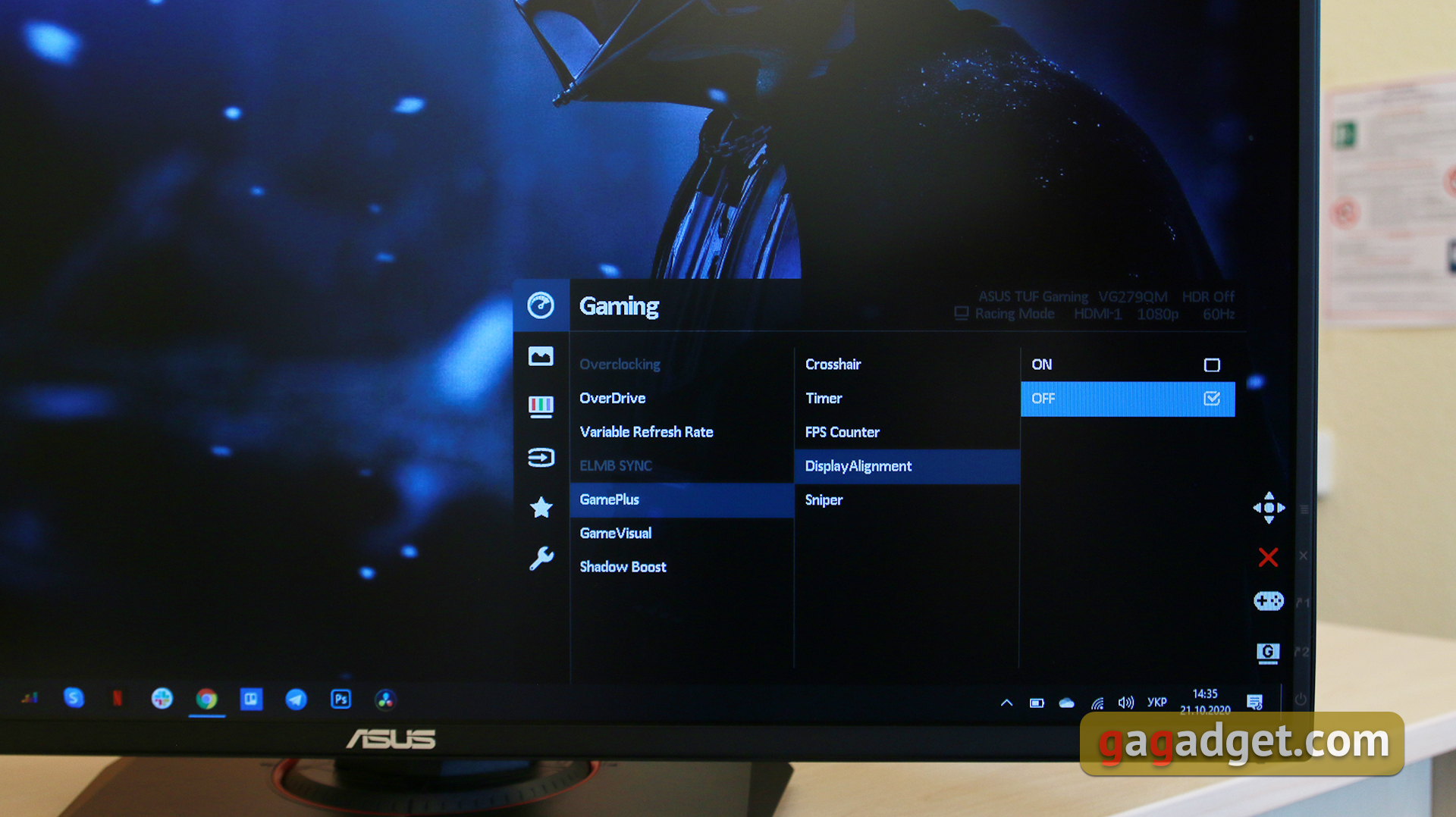
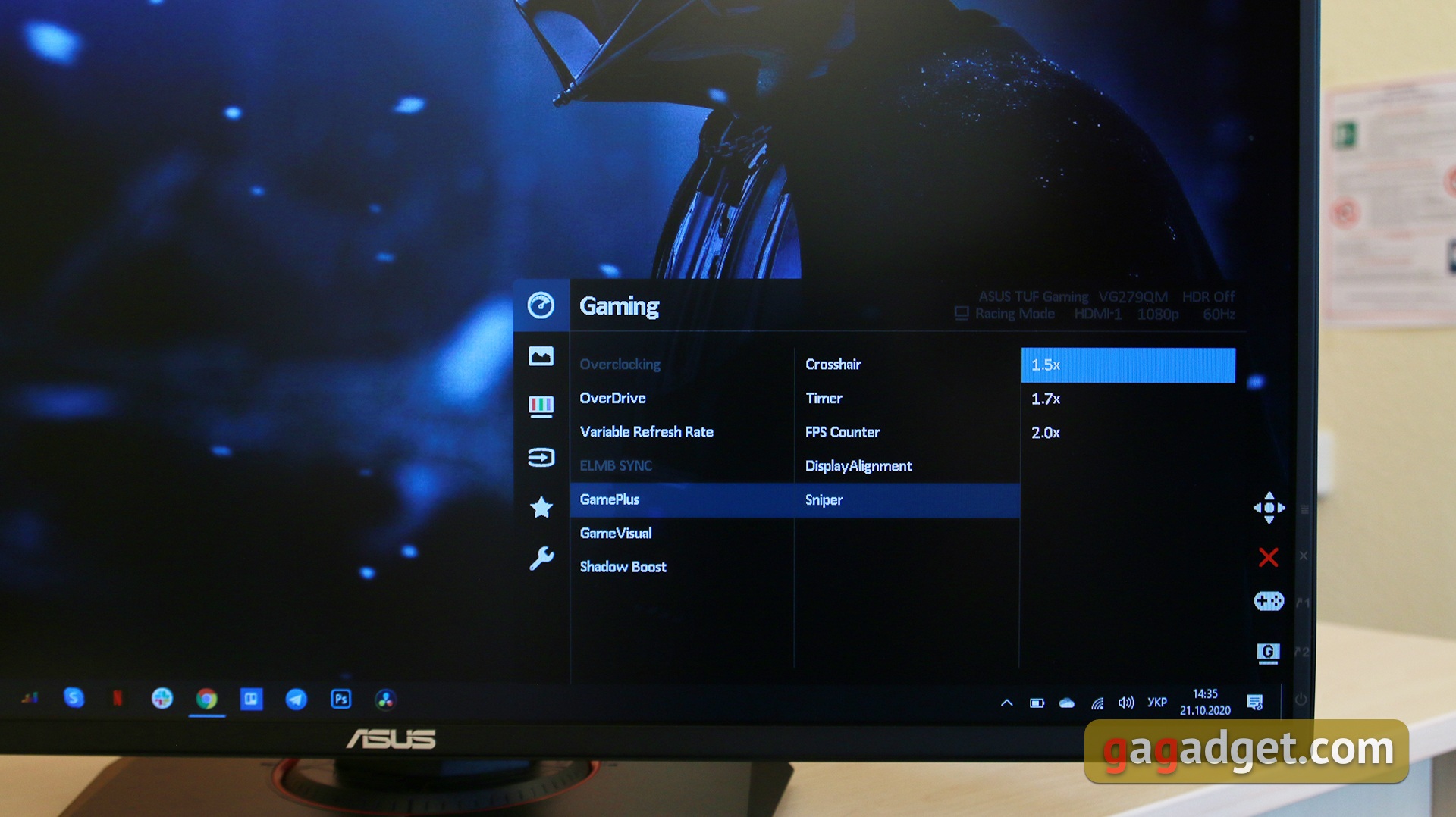






What about ASUS TUF Gaming VG279QM Image Quality?
ASUS TUF Gaming VG279QM has an 8-bit 27-inch FullHD AHVA panel, which is a variation of the IPS from AU Optronics. To be precise, the M270HAN03.0 model is used with W-LED backlighting, native 240 Hz refresh rate and 5ms response time (gray to gray, GtG). Maximum performance of 280 Hz and 1ms is achieved through the overdrive settings. The maximum declared brightness is 400 cd/m² and DisplayHDR 400 is supported. The NVIDIA G-Sync Compatible should be mentioned among other important things. But you should understand that this is not thanks to the presence of G-Sync hardware module, synchronization is implemented by the DisplayPort 1.2 interface and GeForce graphics cards starting from the 10th series with the current drivers. In addition to this, there are a couple more ASUS developments: Extreme Low Motion Blur to reduce blur in dynamic scenes, which can work together with the adaptive frame rate. This effect is reached with the help of ELMB SYNC. Plus, there are some nice bonuses: Flicker-Free (eliminating flicker) and Ultra-Low Blue Light (reducing the intensity of the blue component).

As for the picture quality, this is where the ASUS TUF Gaming VG279QM really shines. The viewing angles are maximum, both horizontally and vertically. The contrast is reduced very slightly. Glow-effect is present, but within the normal range for IPS panels. The parasitic shades appear on a dark background at angles, but on the whole everything is at a comfortable level. There are no critical problems with uniformity of illumination: even on black background there are no obvious annoying lights. Measurements have shown that the maximum brightness of the monitor is 412.859 cd/m², the brightness of the black field is 0.409 cd/m², and the contrast ratio is 1009:1, which is very good and corresponds to the declared indicators. These results are obtained in the Racing mode. The others (except sRGB) have similar results. The color rendering is also good: the color coverage is almost the same as sRGB, the color temperature is close to 7000K, the excess of blue is minimal. The average color error of ΔE is 3.1.
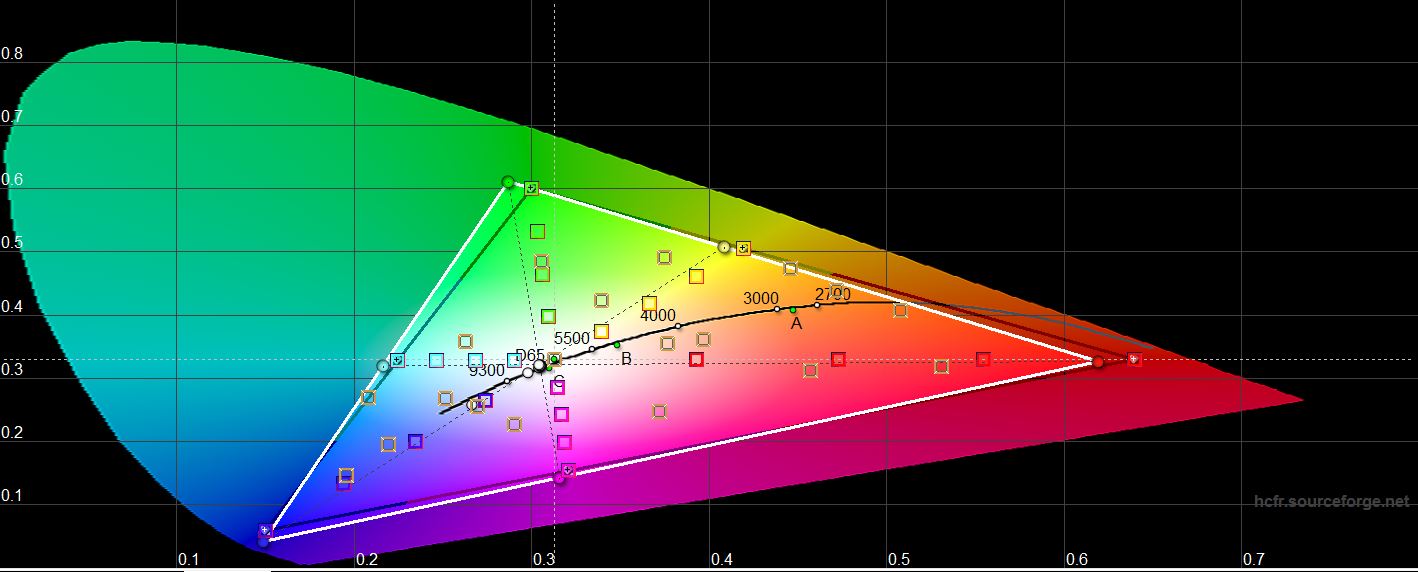
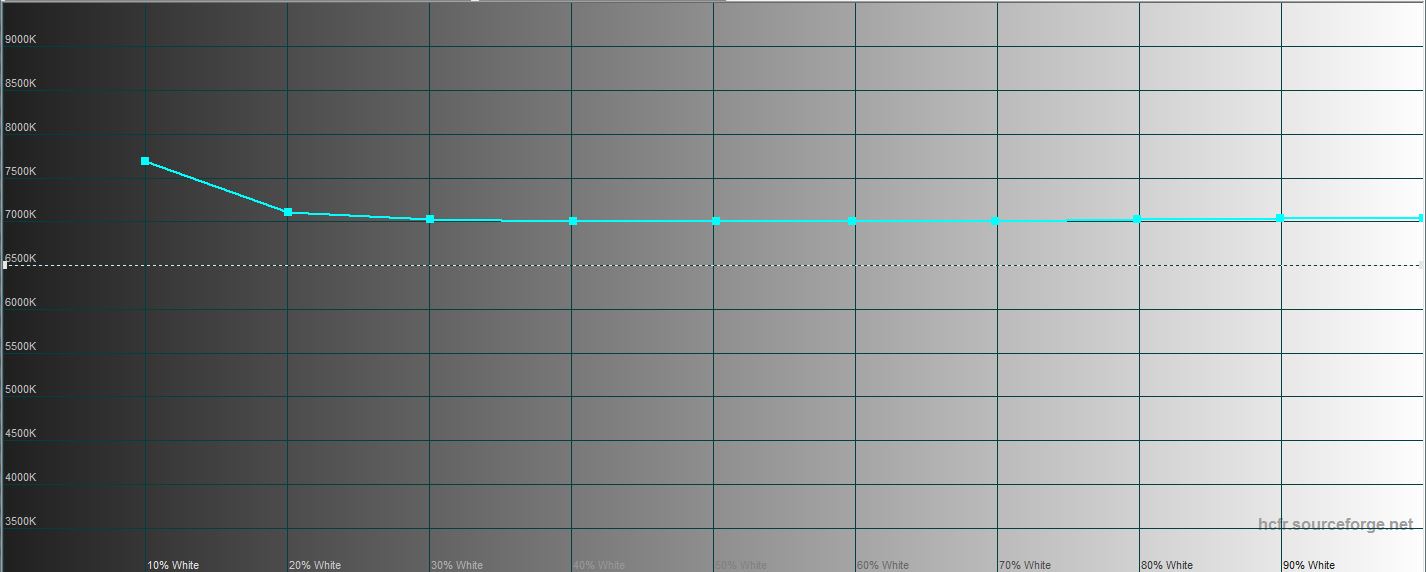
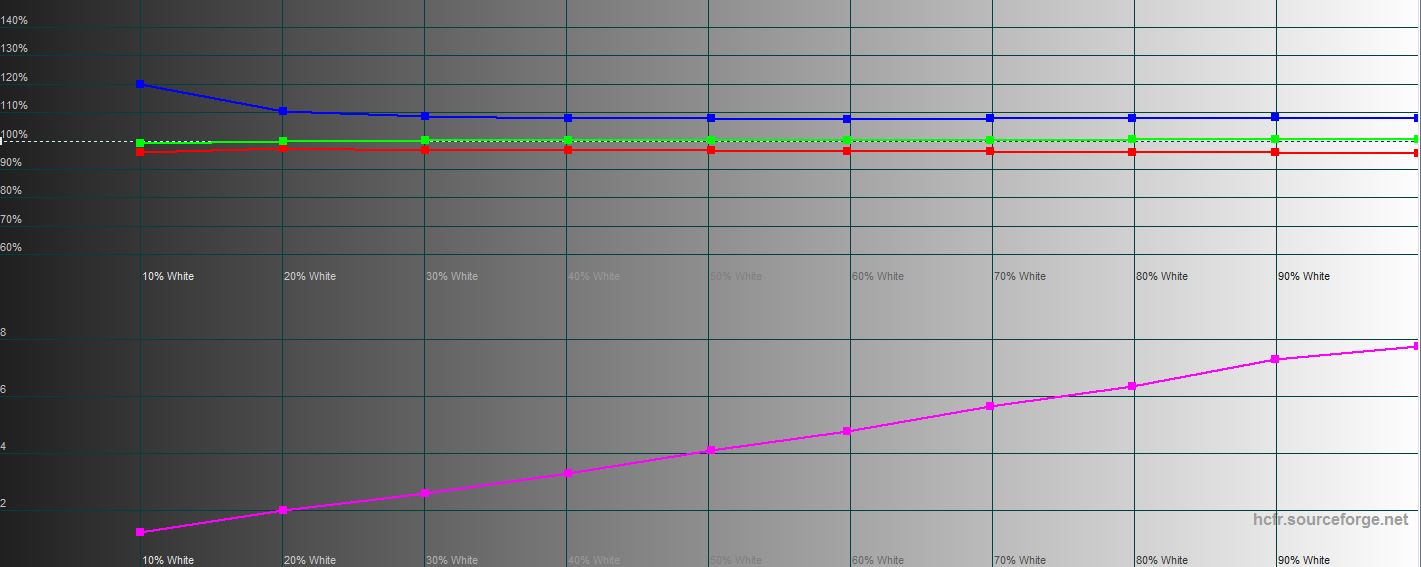
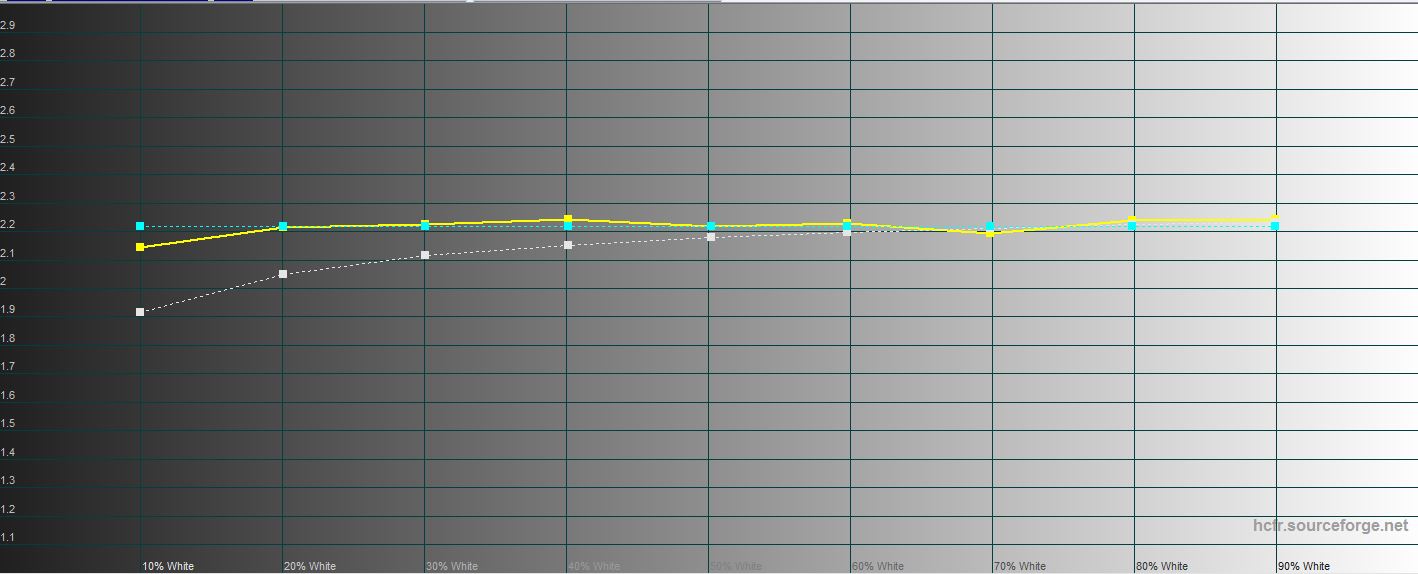
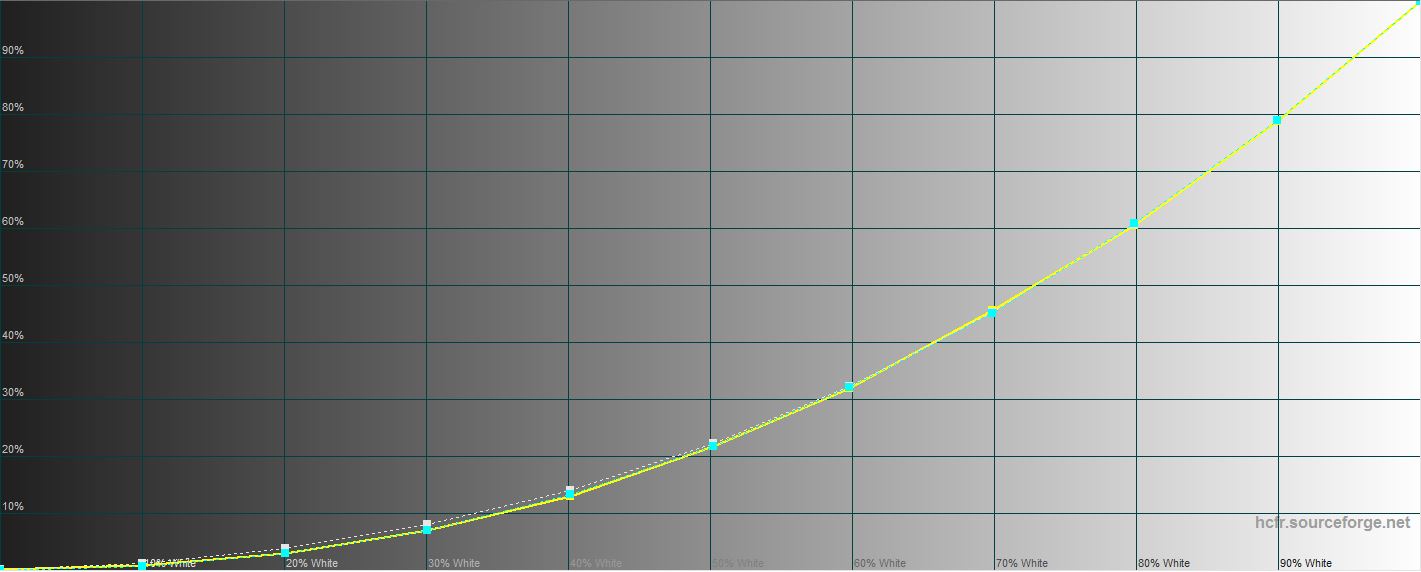
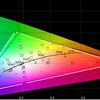




In FPS mode, the brightness is slightly higher: 418.79 cd/m², but the accuracy of color rendering is slightly worse: the color temperature is about 7500K, the gamma curve is sufficiently different from the target, and ΔE (average) is 3.69:

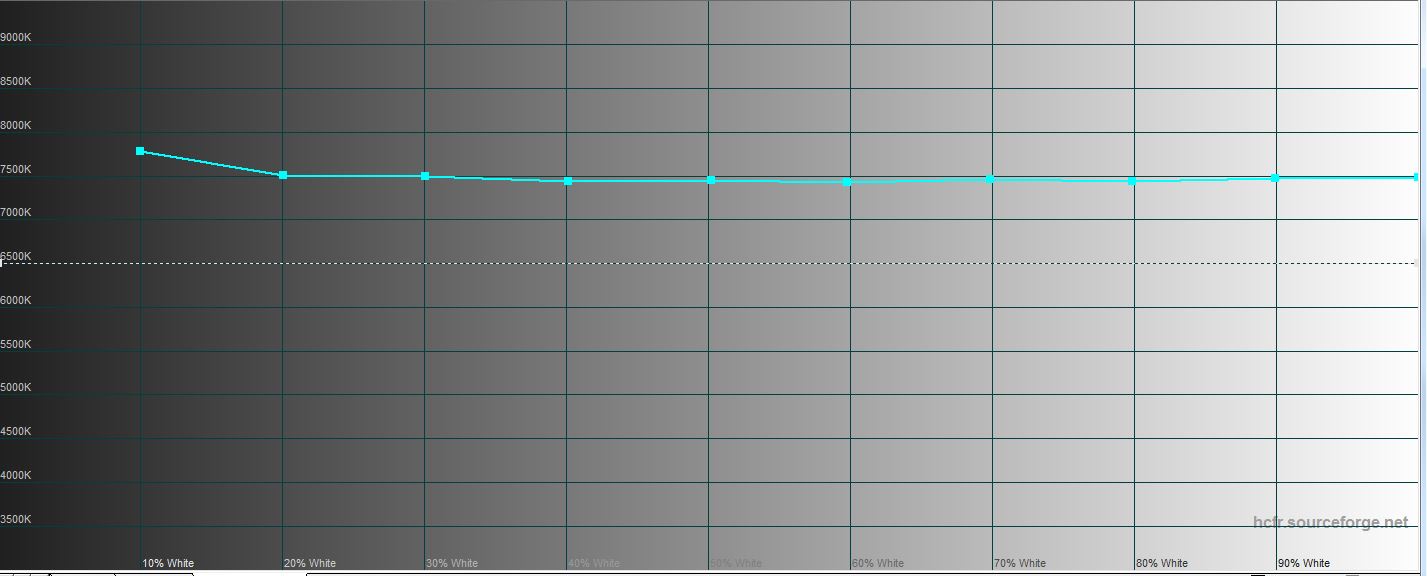


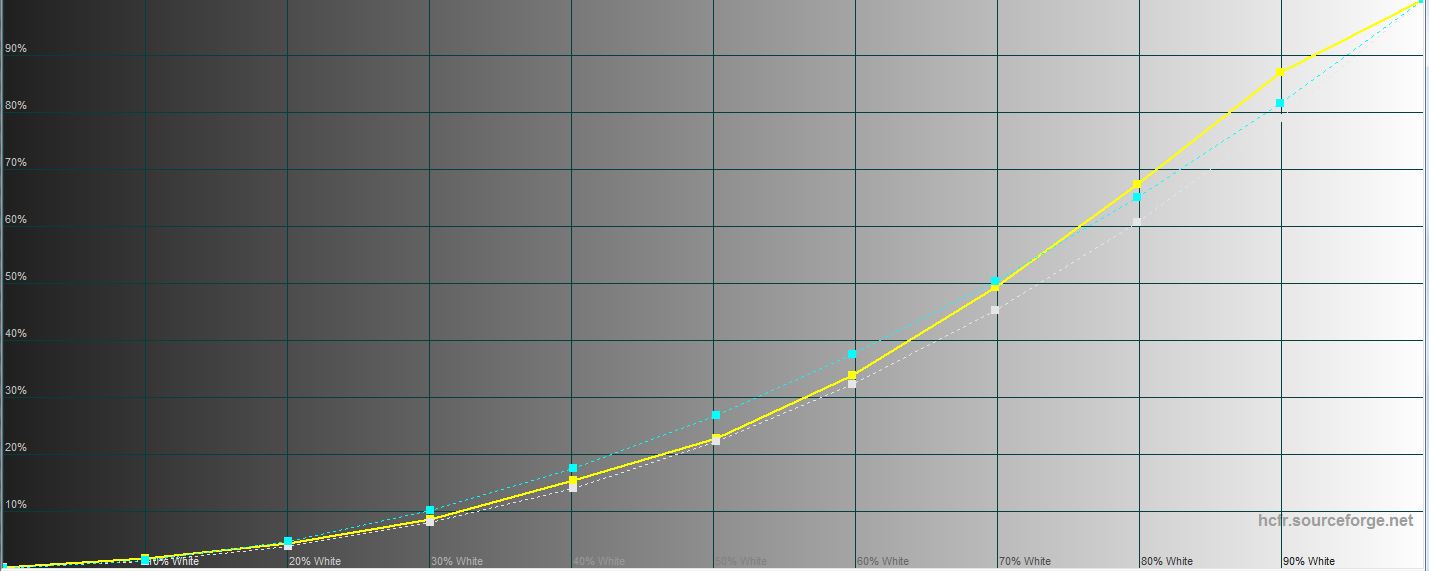
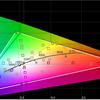




The sRGB mode is the closest to the reference values: ΔE is 2.86 on average. But the brightness in this mode is fixed at a very low 156.87 cd/m², which is not always enough.
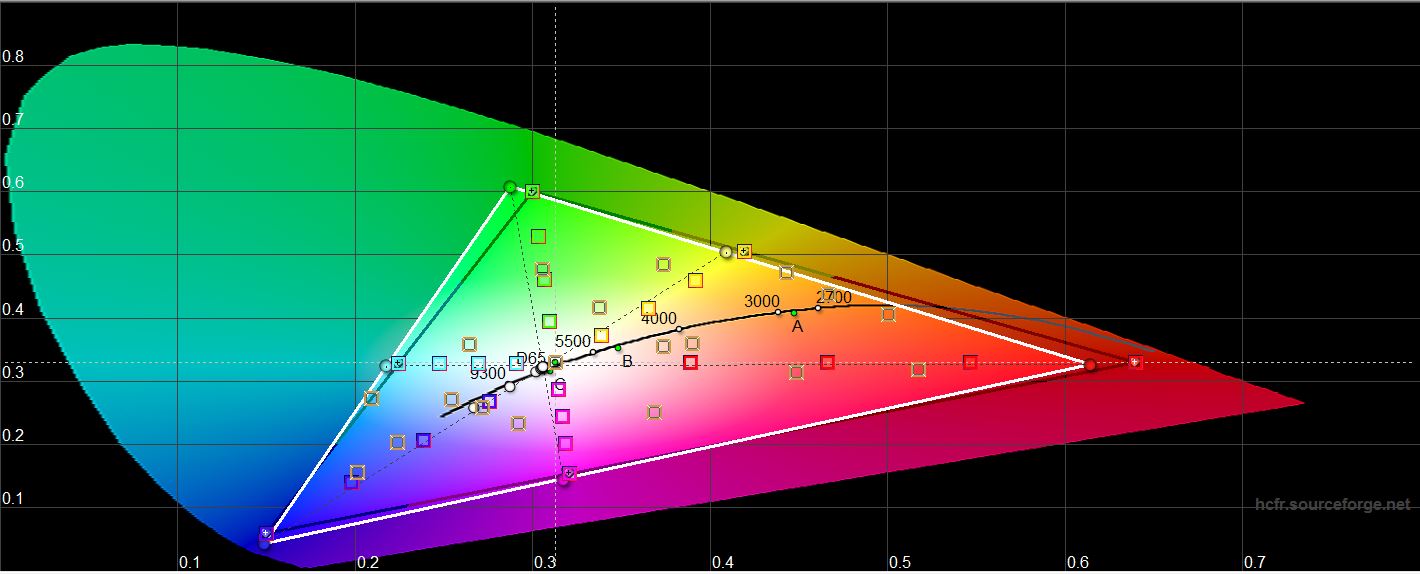
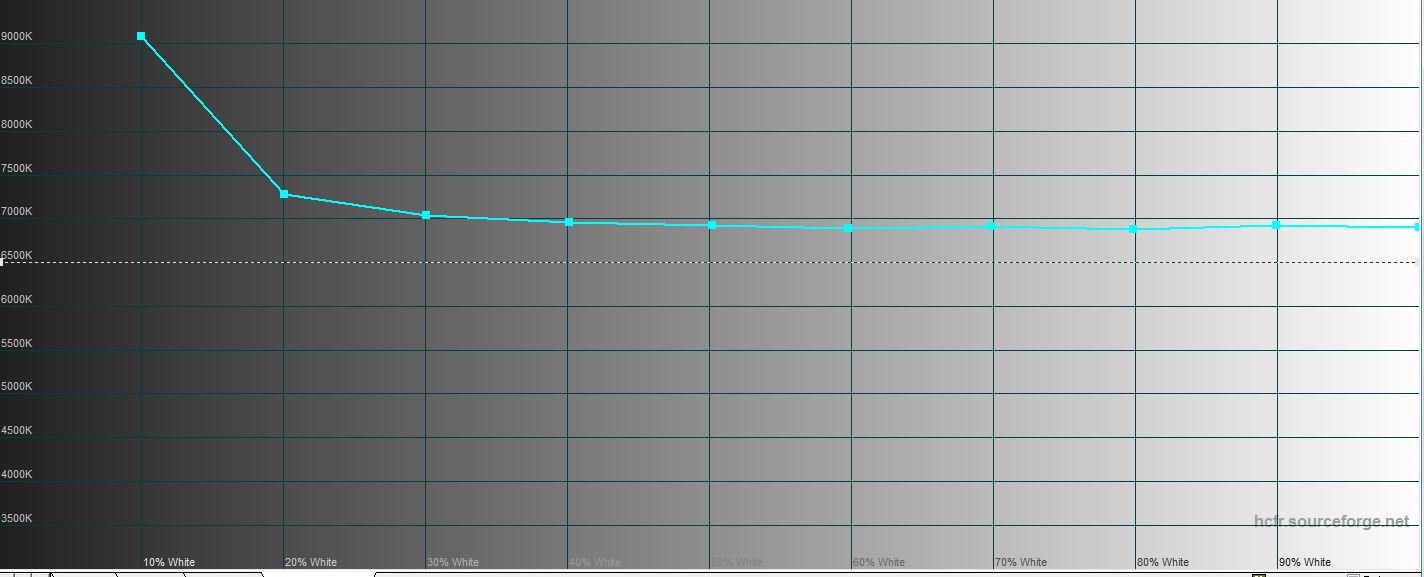


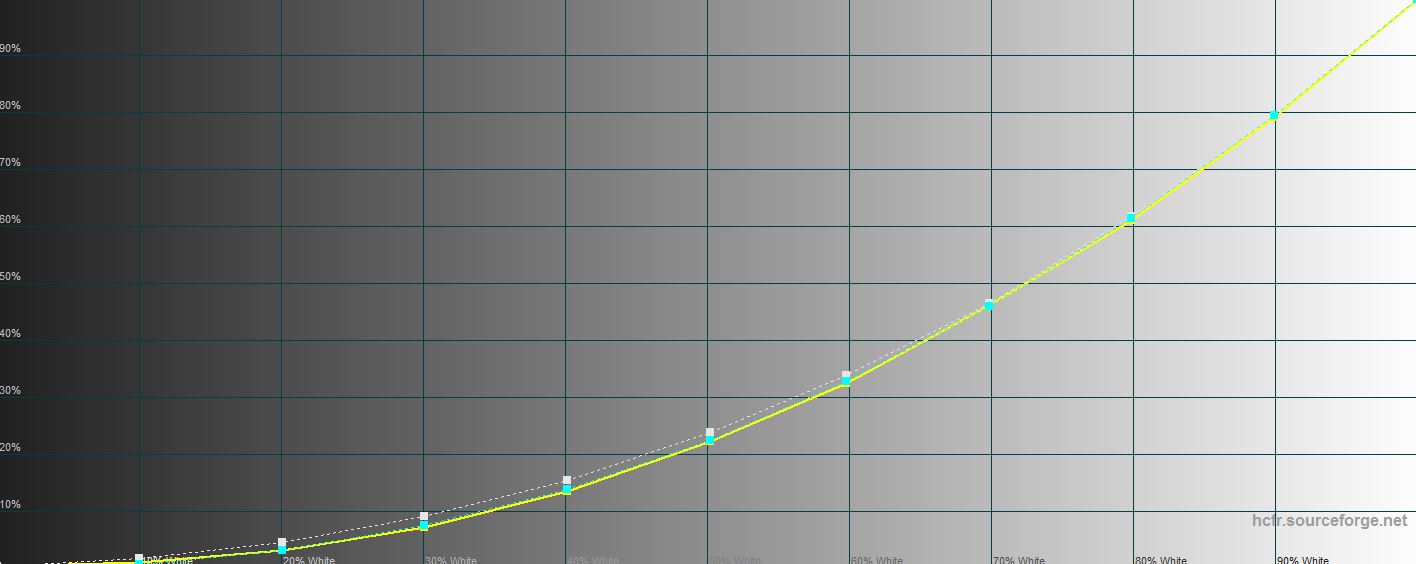
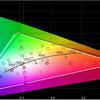




How did It Prove Itself in Games?
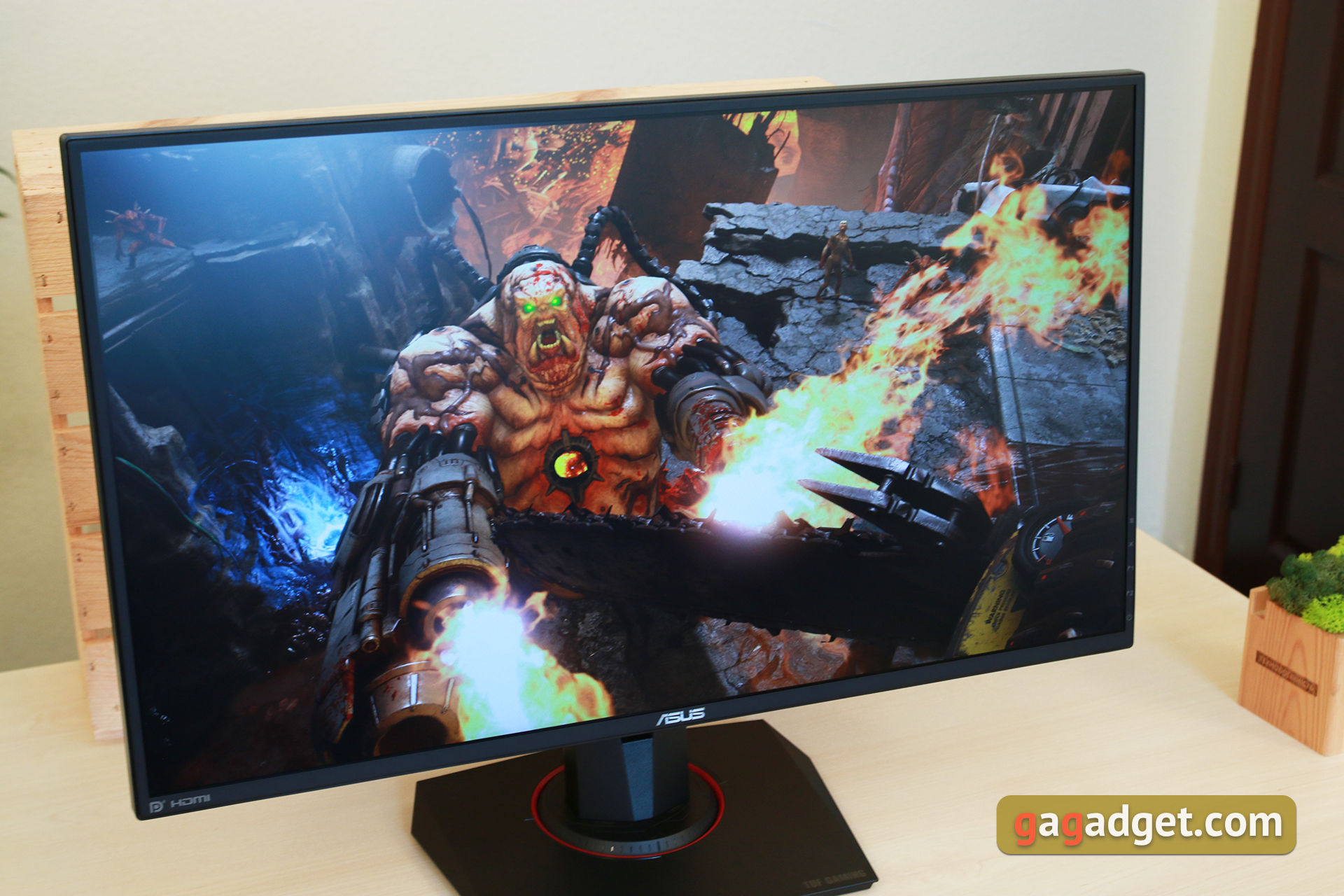
In games ASUS TUF Gaming VG279QM showed itself perfectly with one "but": with 27 inches diagonal and FullHD resolution, the pixel density is about 81.5 ppi. And if you watch movies from a distance then everything is fine on the monitor. But during the game we usually sit close to the monitor and the pixels are really visible. On the other hand, for a gaming model this is quite normal: in order to get the high frame rate you need a better hardware, especially if you play mostly modern games. To test gaming performance, we played fast first-person shooters like DOOM Eternal, CS:GO, Call of Duty: Modern Warfare, in which frame rate is especially important. No obvious artifacts, breaks or loops are observed. As for GamePlus game tricks, the FPS counter can be useful. Perhaps – a timer. And the screen sight and the sniper mode with the enlarged area in the center of the screen is very doubtful. Though it is quite possible that someone will use it.
Reasons to Buy or Not to Buy ASUS TUF Gaming VG279QM:
Pros:
- High quality IPS panel with 280 Hz refresh rate and HDR support;
- Many game modes and additional game features;
- Availability of necessary video connectors;
- Support for Adaptive-Sync and NVIDIA G-Sync;
- Convenient design and versatile appearance.
Cons:
- You are looking for a monitor with higher diagonal and resolution;
- No USB hub.
How Does It Stack Up Against Competitors?
People's Choice – LG UltraGear 27GN75B-B
- Superb 240Hz refresh rate
- Supports both FreeSync and G-Sync
- Great reflections handling
One more monitor with 1ms-class IPS panel and support for two major variable refresh rate standards. The 240 Hz refresh rate improves picture clarity for dynamic scenes and provides full immersion into the game. The stand lets you adjust the height and tilt of the screen and rotate it to portrait orientation. But there is no swivel capability. The LG 27GN75B-B has two HDMI, DisplayPort, Audio Output and USB 3.0 hub ports available. Despite the announced support for HDR10, the high dynamic range content doesn't look as good as it should. But thanks to the wide viewing angles and 99% coverage of the sRGB color space, the display is perfect for daily use.
ASUS TUF Gaming VG279QM VS LG UltraGear 27GN75B-B
| LG UltraGear 27GN75B-B | ASUS TUF Gaming VG279QM | |
| Screen Size & Panel Type | 27-inch, IPS | 27-inch, AHVA IPS |
| Resolution | 1920x1080 (16:9) | 1920x1080 (16:9) |
| Refresh Rate | 240Hz | 240Hz (280Hz Overdrive) |
| Response Time (GTG) | 1 ms | 1 ms |
| Brightness | 400 nits | 400 nits |
| Contrast | 1000:1 | 1000:1 |
| Connectivity | 2хHDMI 2.0, DisplayPort 1.2, Headphone out | 2хHDMI 2.0, DisplayPort 1.2, Headphone output |
| USB Hub | 2xUSB 3.0 | ✗ |
| Speakers | ✗ | 2x2W |
Premium Choice – MSI Optix MPG341CQR
- Beautiful 34 inch curved screen
- Vivid colors and deep black levels
- Futuristic design with RGB lighting
MSI Optix MPG341CQR has a large 34-inch screen with an ultra-wide 21.5:9 aspect ratio and a native resolution of 3440x1440 pixels. The 1800R curvature display provides an immersive gaming experience. From the box, the picture quality is excellent, but since it is a VA panel, you may notice some black level smearing. The monitor has RGB backlighting on both sides, and the front bar can work with GameSense software to display in-game statuses like health and ammo. In the middle of the lower frame there is a basic camera, which can be used to automatically adjust the brightness of the screen. There is also a cradle for your webcam and an attachable mouse bungee. There are two HDMI 2.0, DisplayPort 1.4b and USB Type-C. Two of the three USB 3.2 ports, Earphone out and Mic in jacks are on the left side. Worth mentioning is a good build quality and a solid stand.
ASUS TUF Gaming VG279QM VS MSI Optix MPG341CQR
| MSI Optix MPG341CQR | ASUS TUF Gaming VG279QM | |
| Screen Size & Panel Type | 34-inch, 1800R VA | 27-inch, AHVA IPS |
| Resolution | 3440x1440 (21.5:9) | 1920x1080 (16:9) |
| Refresh Rate | 144Hz | 240Hz (280Hz Overdrive) |
| Response Time (GTG) | 1 ms | 1 ms |
| Brightness | 400 nits | 400 nits |
| Contrast | 3000:1 | 1000:1 |
| Connectivity | 2хHDMI 2.0, DisplayPort 1.4, USB Type-C, audio in/out | 2хHDMI 2.0, DisplayPort 1.2, Headphone output |
| USB Hub | 3xUSB 3.2 Gen1 | ✗ |
| Speakers | ✗ | 2x2W |
Best Budget – AOC C27G1
- Curved 1800R panel and 144Hz
- Good contrast and black levels
- Excellent value for the money
AOC C27G1 delivers reasonably high 144Hz refresh rate at Full HD resolution. The manufacturer uses curved VA panel for better immersion. Blacks are black, but colors change when viewed at an angle (which is common with this type of screen). AOC Flicker Free Technology reduces the load on your eyes, the monitor is also compatible with FreeSync Premium for smooth gameplay. You get most standard input ports, including two HDMI 1.4, DisplayPort 2, and VGA. There is also a headphone output. The stand allows you to tilt, swivel and adjust the height of the display. The only drawback of the model taking into account the price is the inconvenient navigation buttons for the OSD menu.
ASUS TUF Gaming VG279QM VS AOC C27G1
| AOC C27G1 | ASUS TUF Gaming VG279QM | |
| Screen Size & Panel Type | 27-inch, 1800R VA | 27-inch, AHVA IPS |
| Resolution | 1920x1080 (16:9) | 1920x1080 (16:9) |
| Refresh Rate | 144Hz | 240Hz (280Hz Overdrive) |
| Response Time (GTG) | 1ms | 1 ms |
| Brightness | 250 nits | 400 nits |
| Contrast | 3000:1 | 1000:1 |
| Connectivity | 2хHDMI 2.0, DisplayPort 1.2, VGA, Headphone out | 2хHDMI 2.0, DisplayPort 1.2, Headphone output |
| USB Hub | ✗ | ✗ |
| Speakers | ✗ | 2x2W |
E-sports Choice – BenQ Zowie XL2546
- Extremely fast response time
- Wide gamer feature set
- S-Switch makes it easy to adjust settings
Modern IPS displays can achieve a response time of 1ms using overdrive algorithms, but TN panels are still faster. BenQ Zowie XL2546 with 240Hz refresh rate can give gamers a competitive edge over their opponents. The monitor comes with an S-Switch console which allows saving and switching between the three profiles. Side shields help you focus on your game and are easy to remove if you don't need them. On the left there is a pop-out headset holder, there's also a hole in the stand for cable management. The XL2546 offers lots of gamer-friendly features. For example, Black eQualizer technology brightens dark scenes to prevent enemies from hiding. Dynamic Accuracy (DyAc) makes fast motion look smooth and clear. TL;DR became an excellent choice for fast-paced games.
ASUS TUF Gaming VG279QM VS BenQ Zowie XL2546
| BenQ Zowie XL2546 | ASUS TUF Gaming VG279QM | |
| Screen Size & Panel Type | 24.5-inch, TN | 27-inch, AHVA IPS |
| Resolution | 1920x1080 (16:9) | 1920x1080 (16:9) |
| Refresh Rate | 240Hz | 240Hz (280Hz Overdrive) |
| Response Time (GTG) | 1 ms | 1 ms |
| Brightness | 320 nits | 400 nits |
| Contrast | 1000:1 | 1000:1 |
| Connectivity | 2хHDMI 2.0, DisplayPort 1.2, DVI-DL, Headphone jack, Mic in | 2хHDMI 2.0, DisplayPort 1.2, Headphone output |
| USB Hub | 2xUSB 3.0 | ✗ |
| Speakers | ✗ | 2x2W |
The Verdict
Three things to know about ASUS TUF Gaming VG279QM:
- The monitor is equipped with a quality IPS panel with a maximum refresh rate of 280 Hz in acceleration (240 Hz - native frequency) and a pixel response time of up to 1 ms.
- There is 2xHDMI 2.0, DisplayPort 1.2, 3.5mm audio jack for headphones but no USB hub.
- The monitor supports Extreme Low Motion Blur, G-Sync Compatible and ELMB SYNC.
